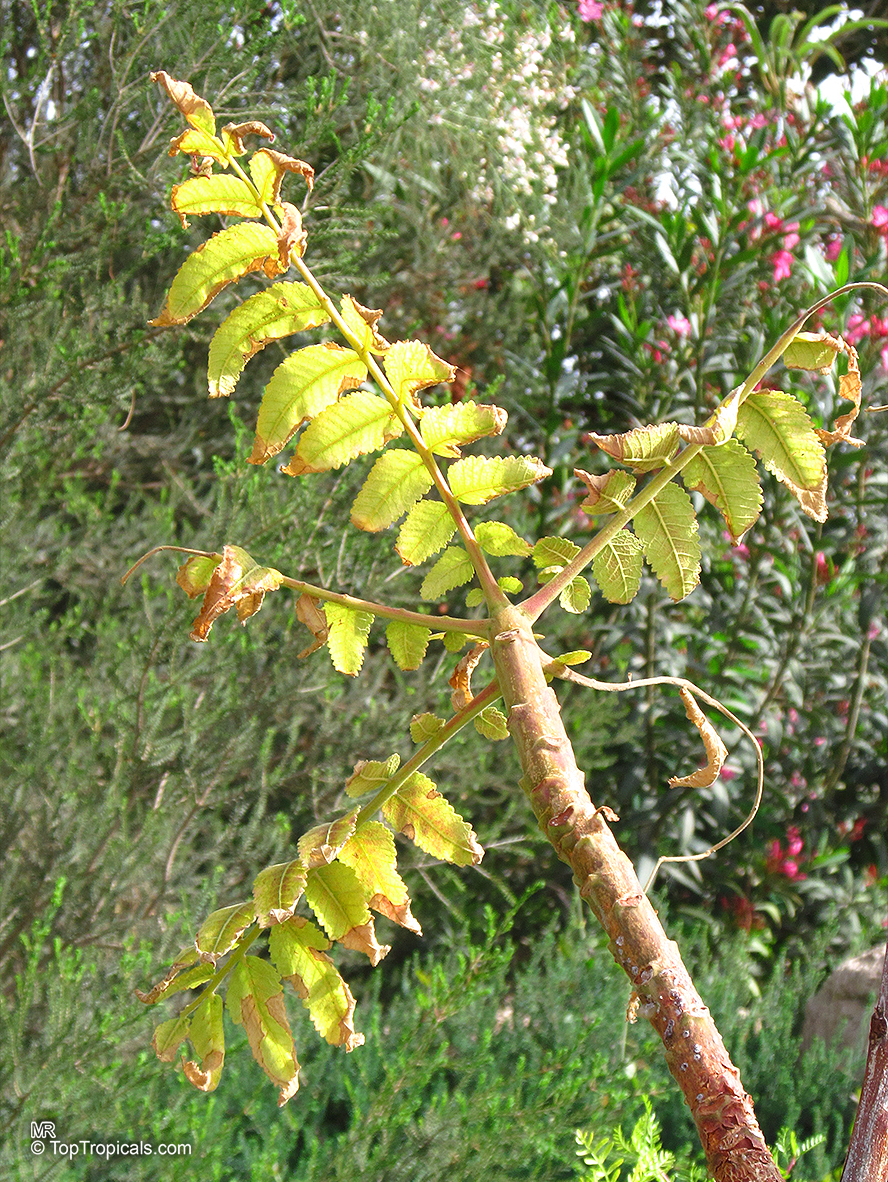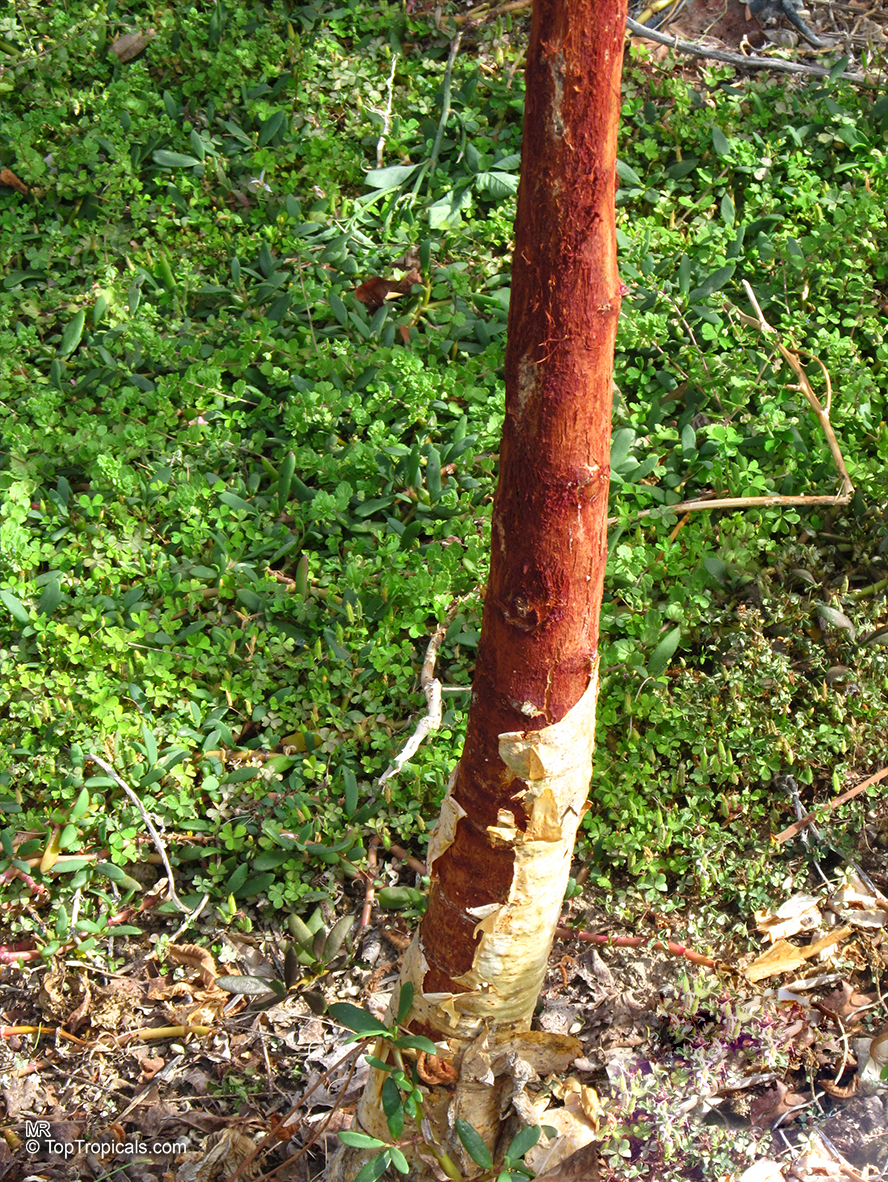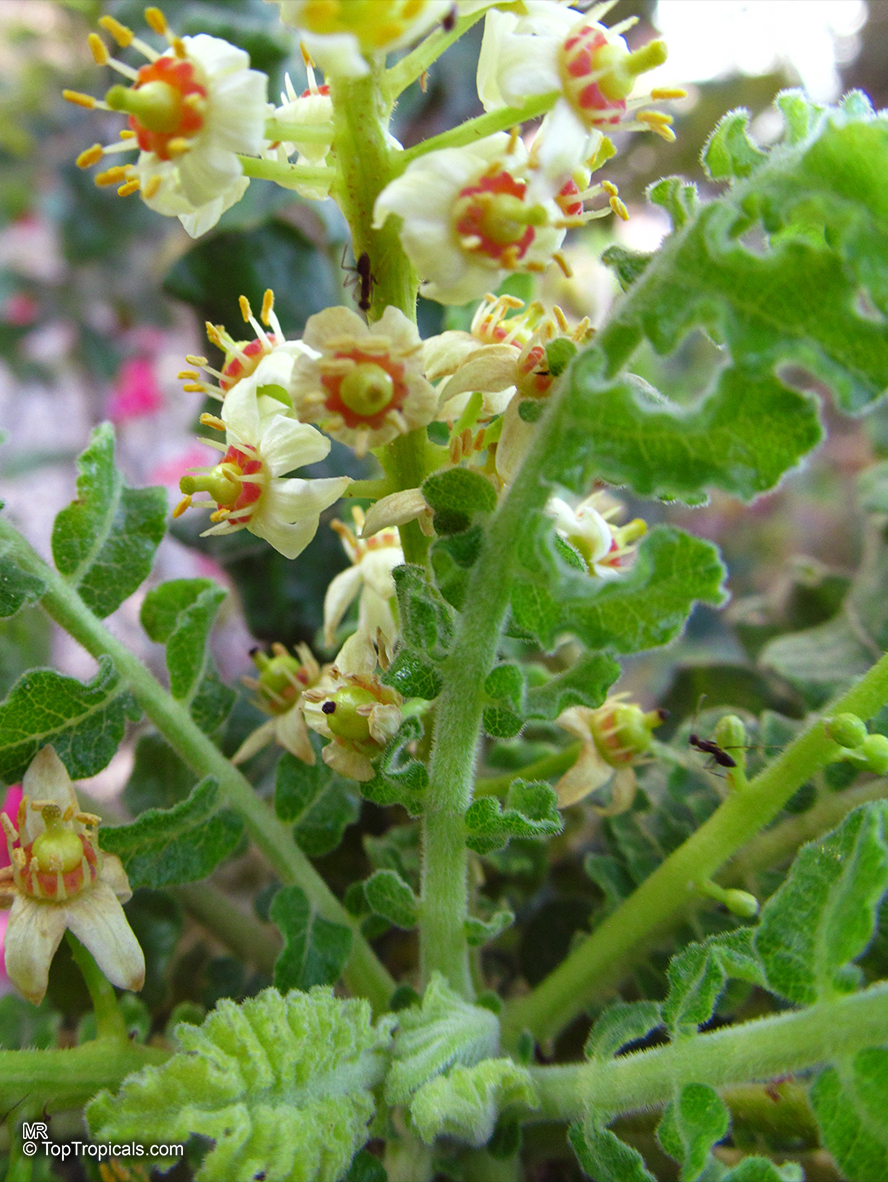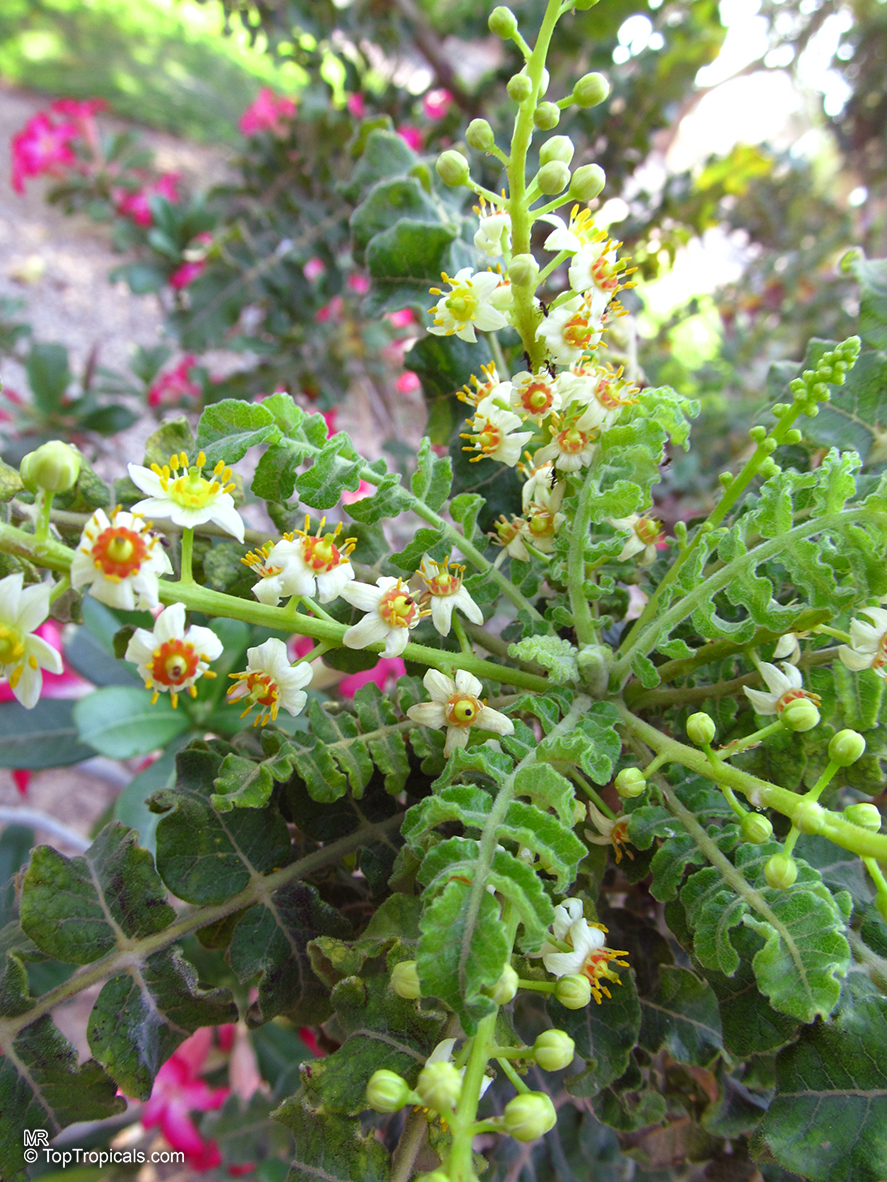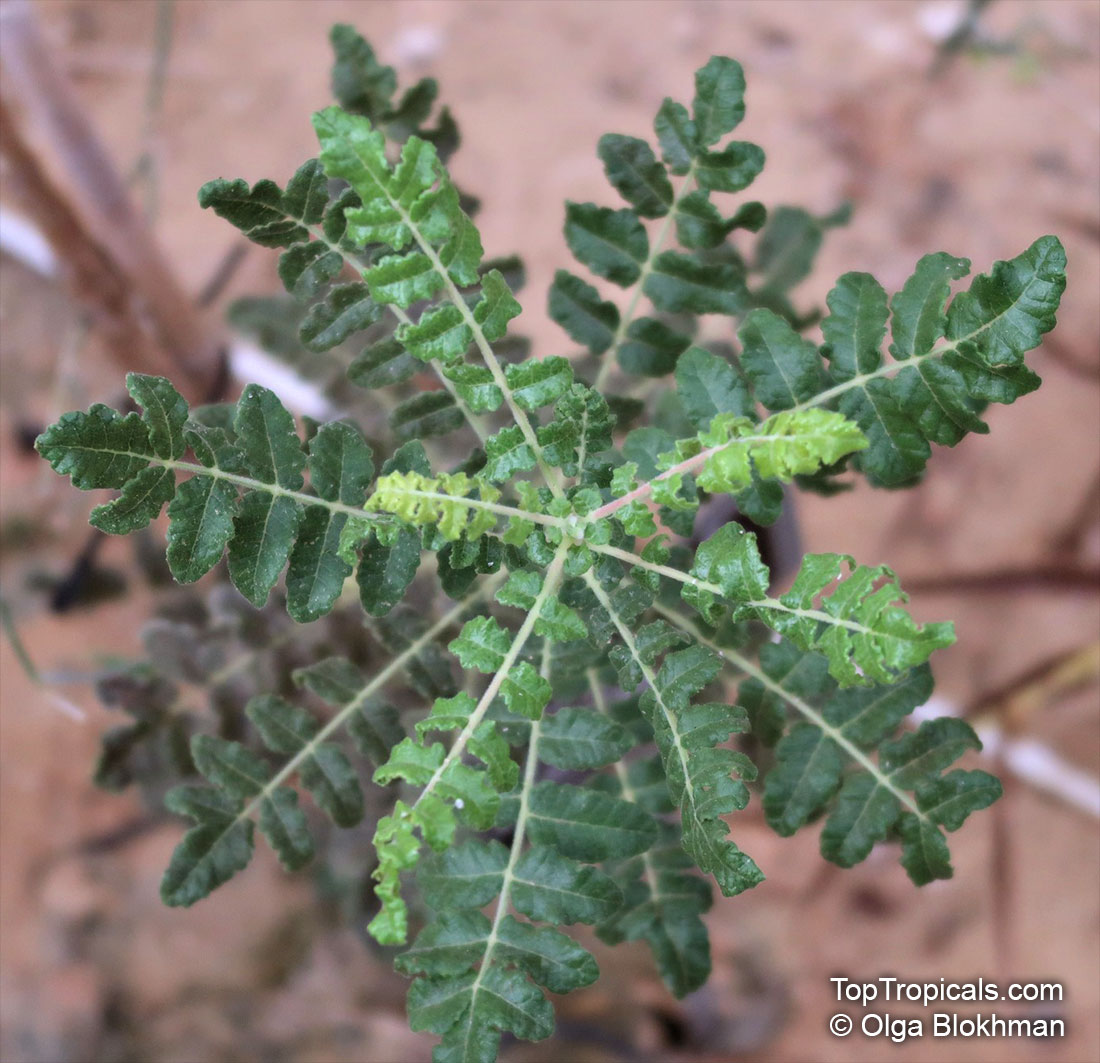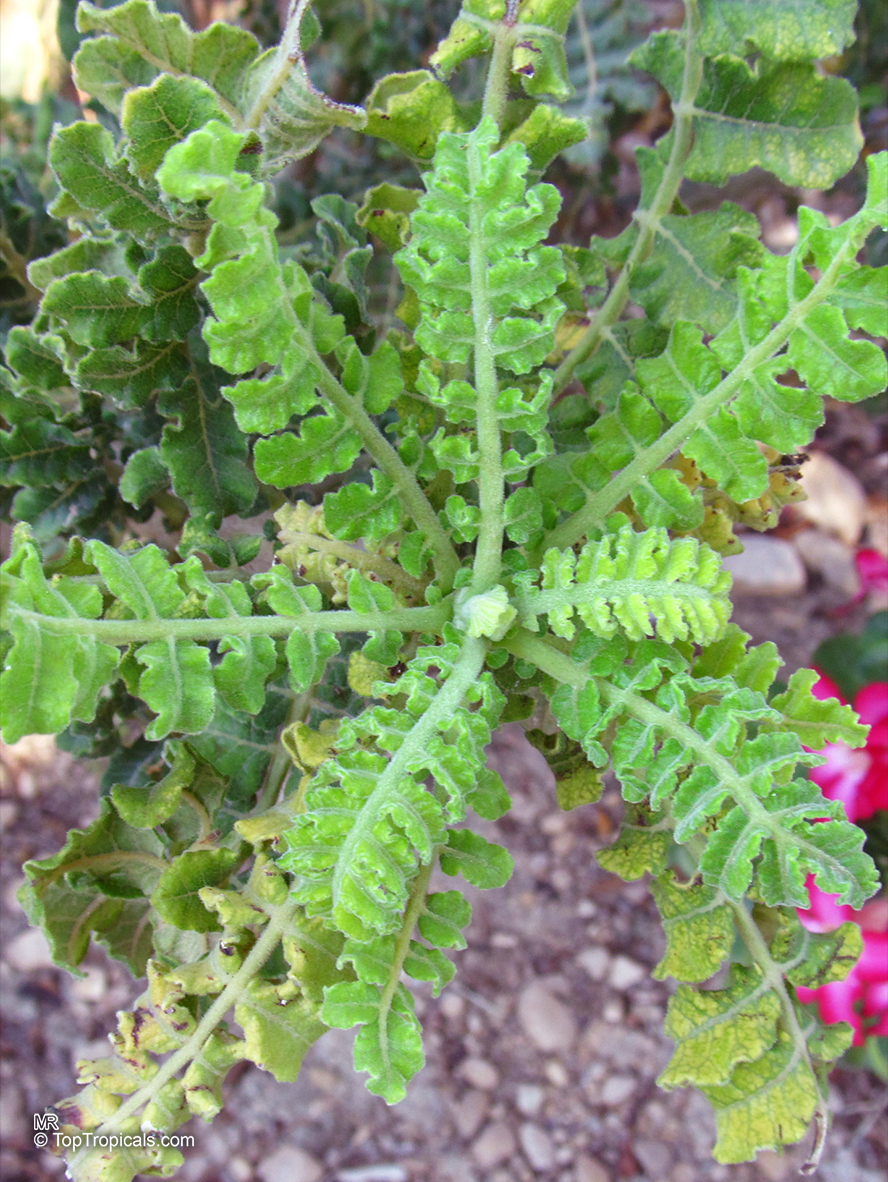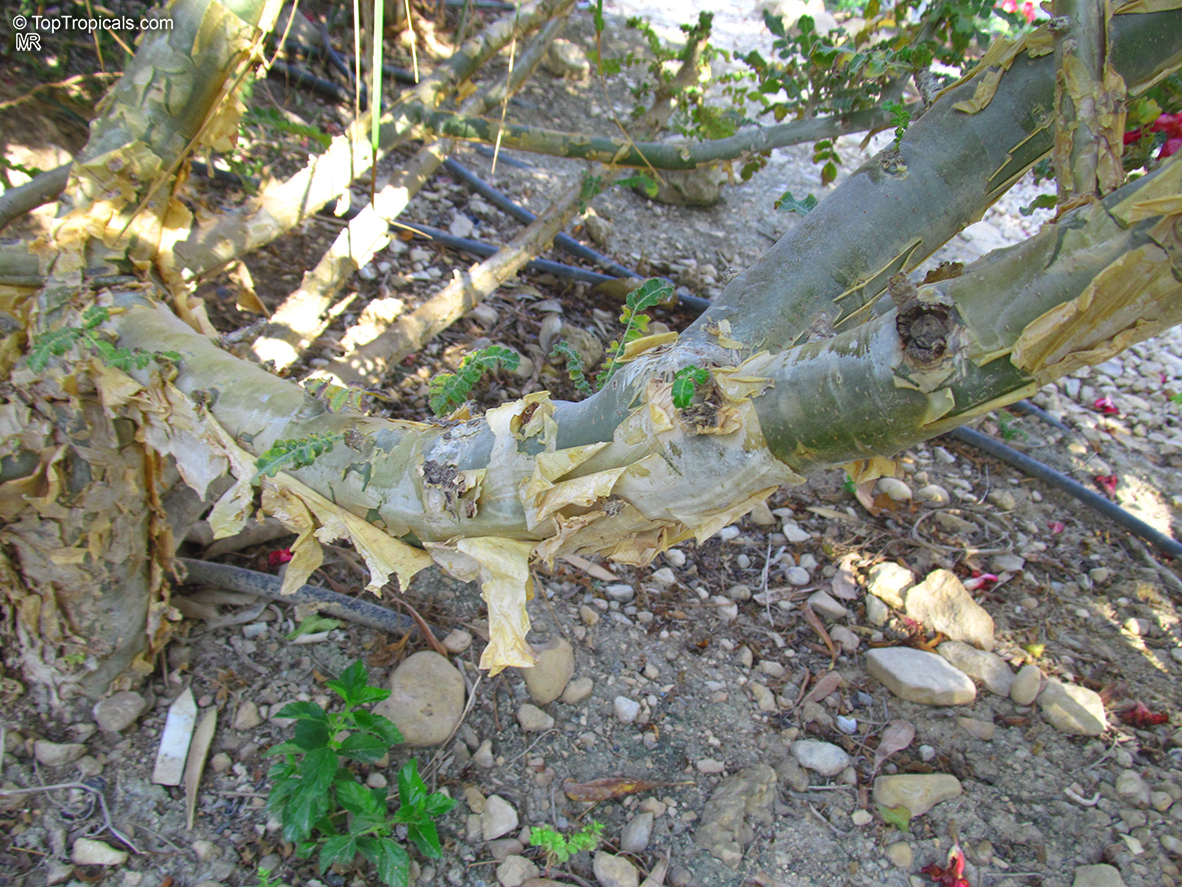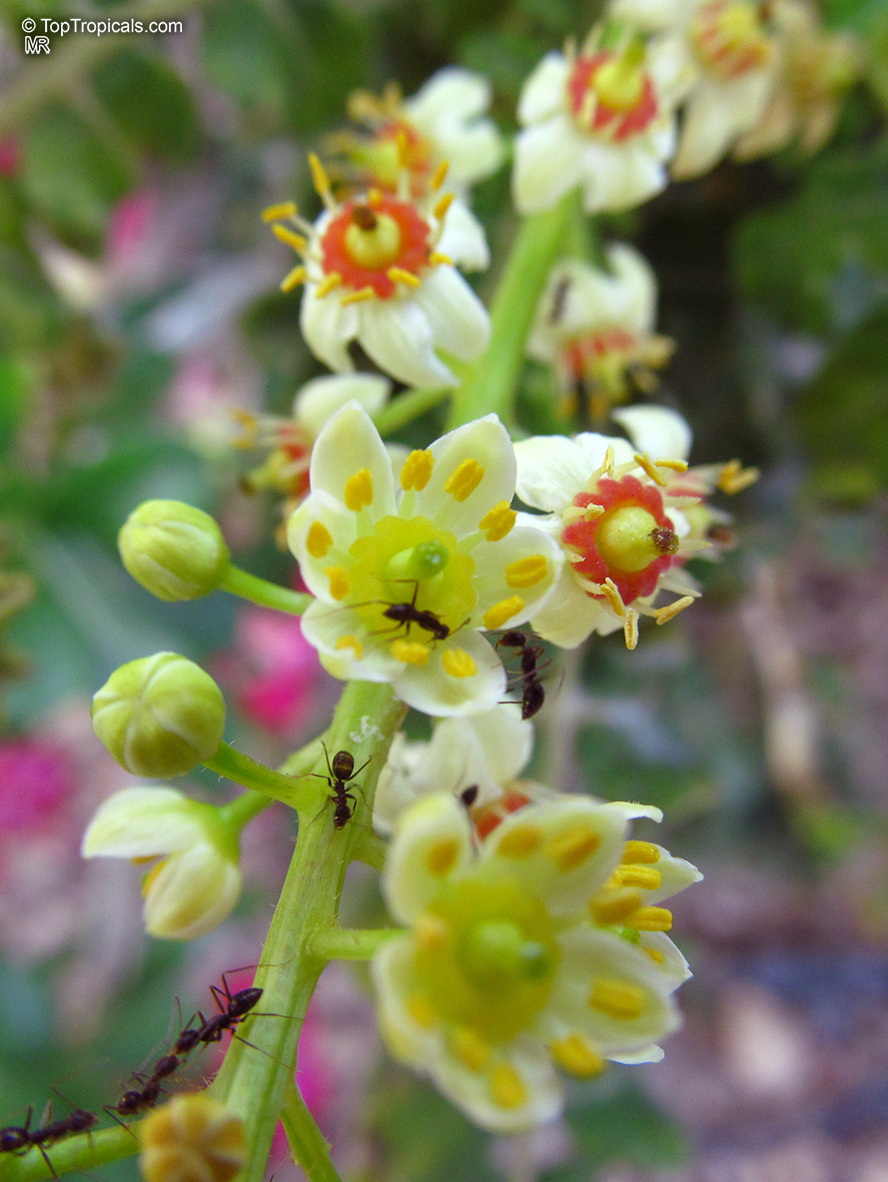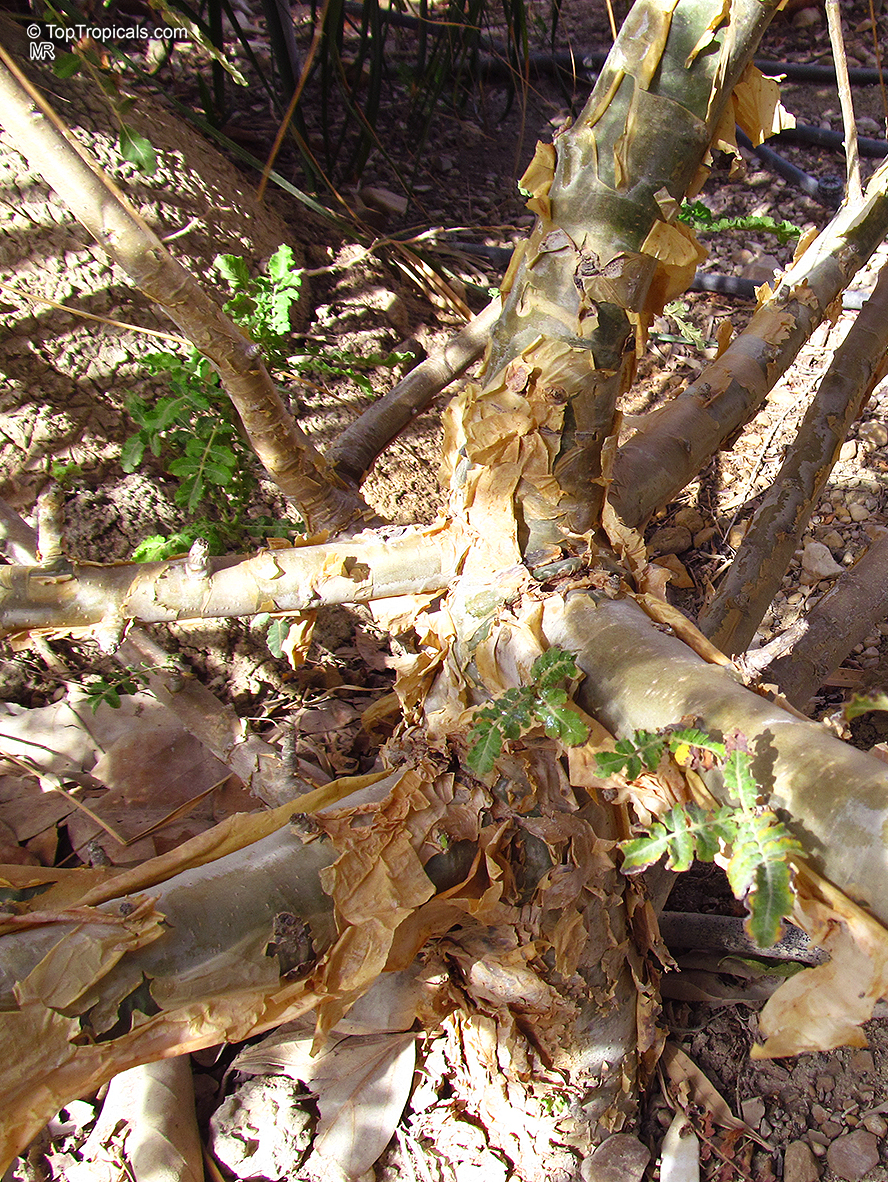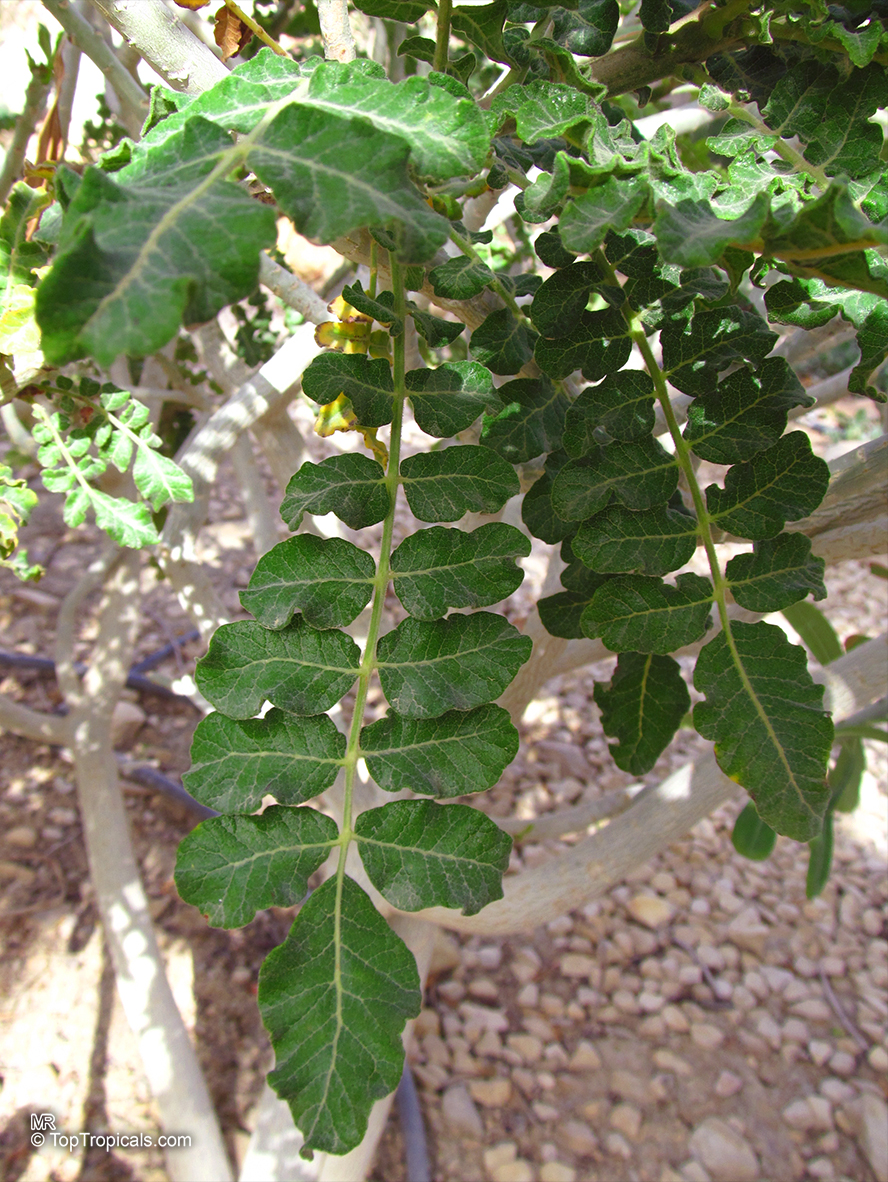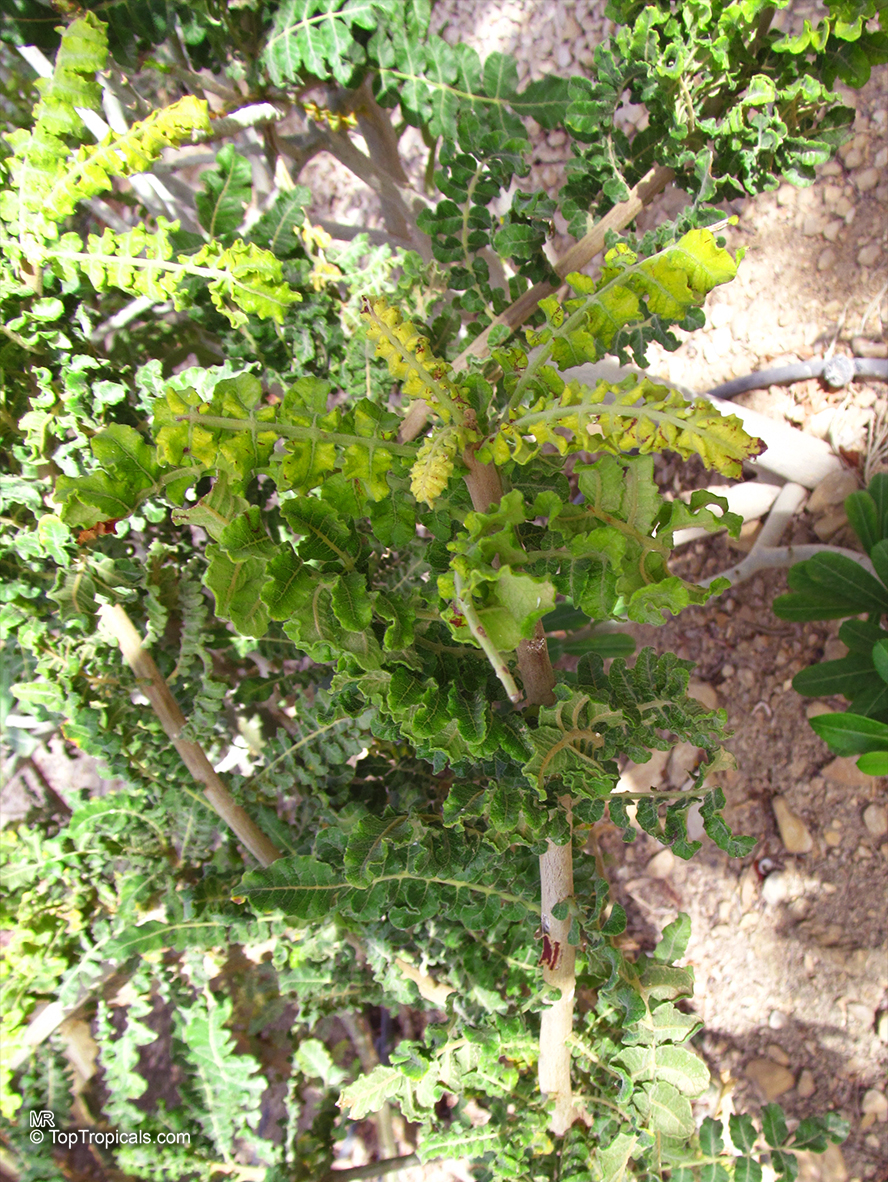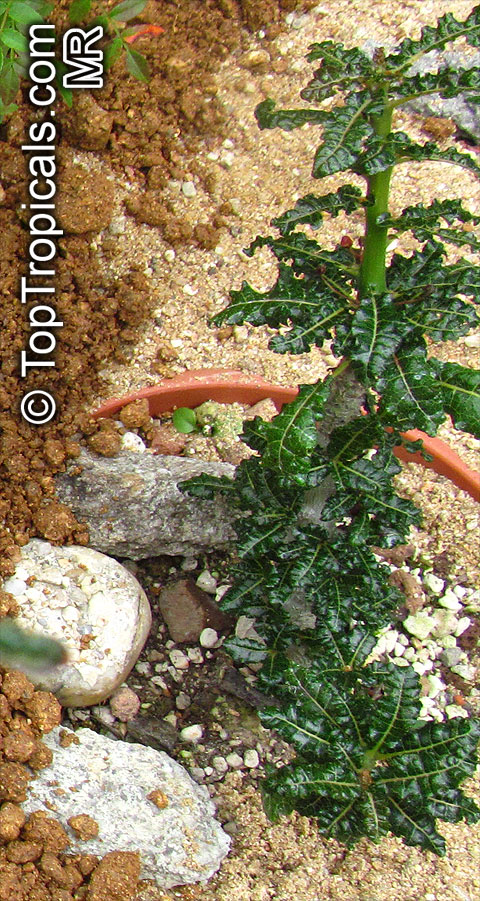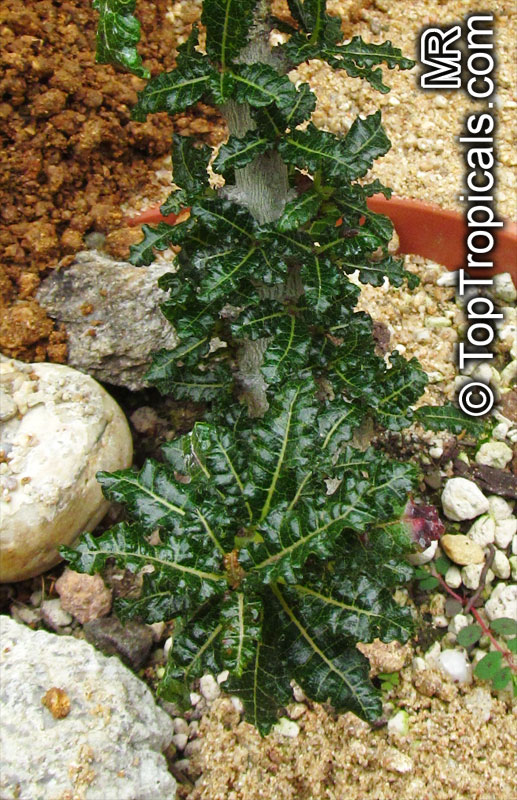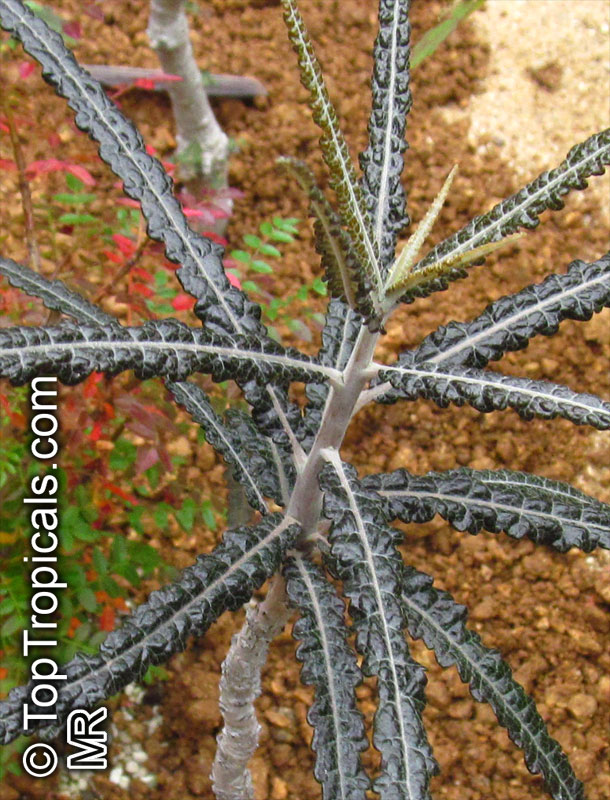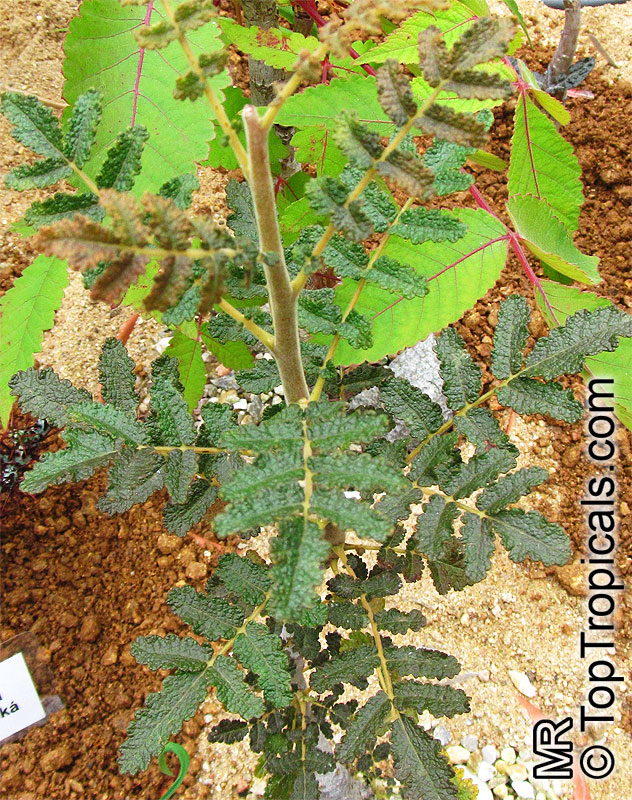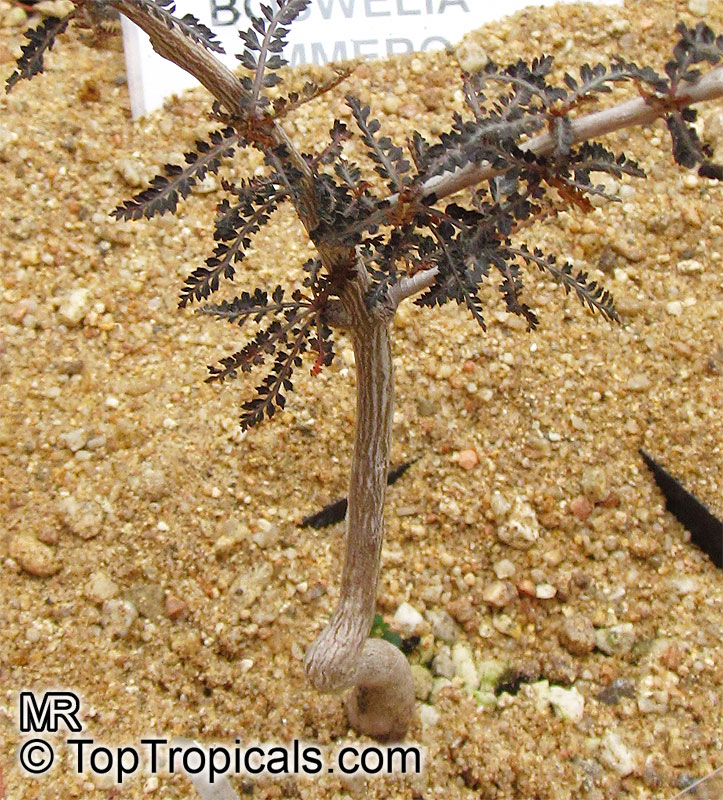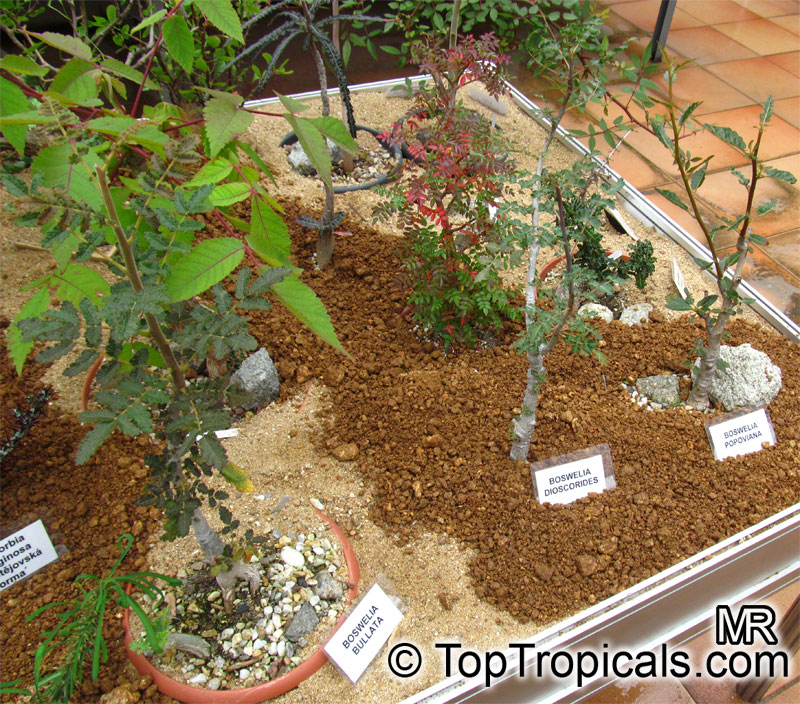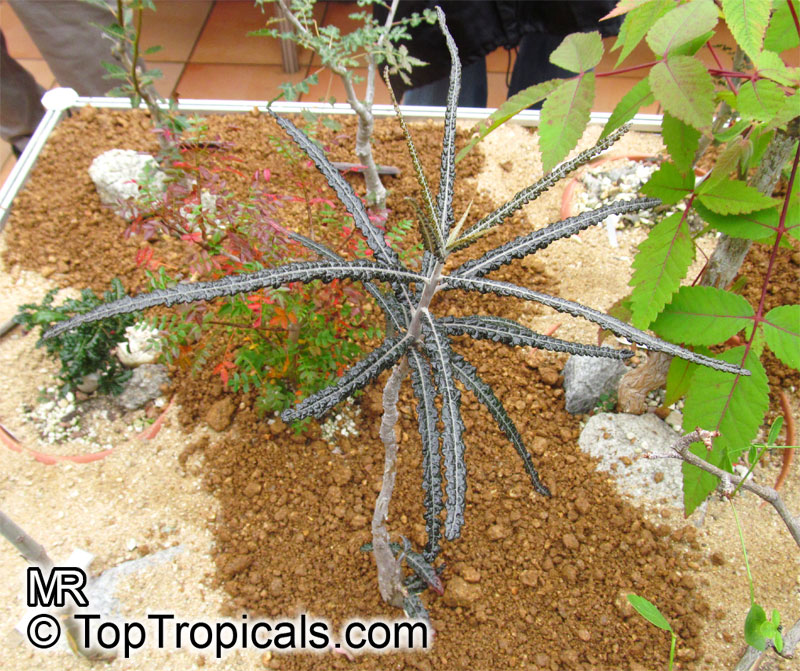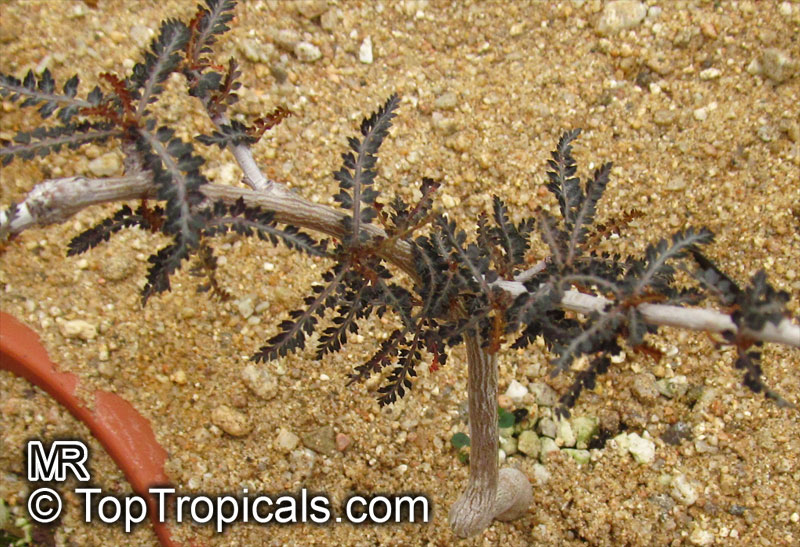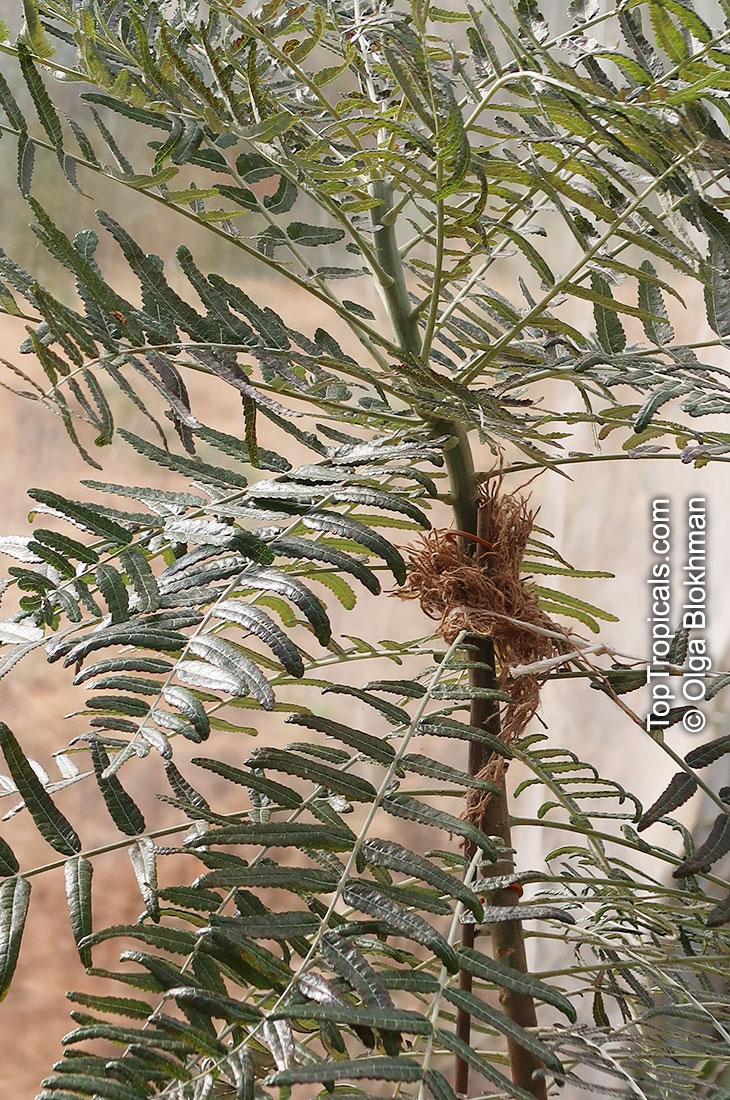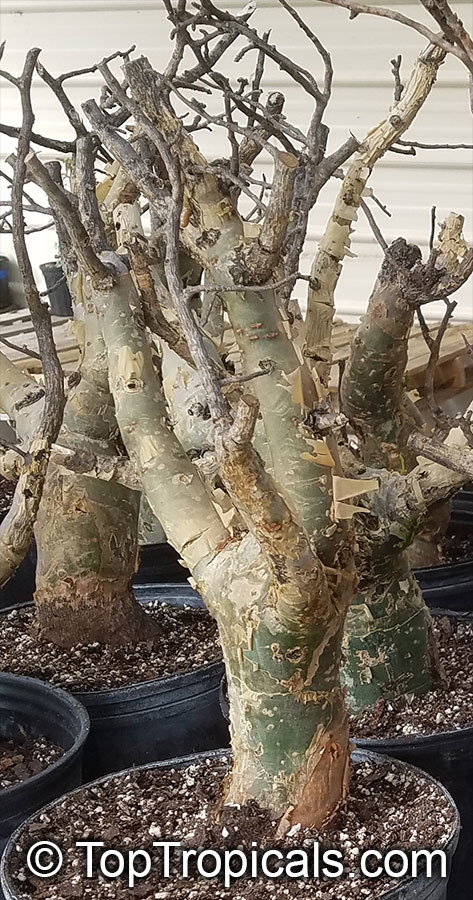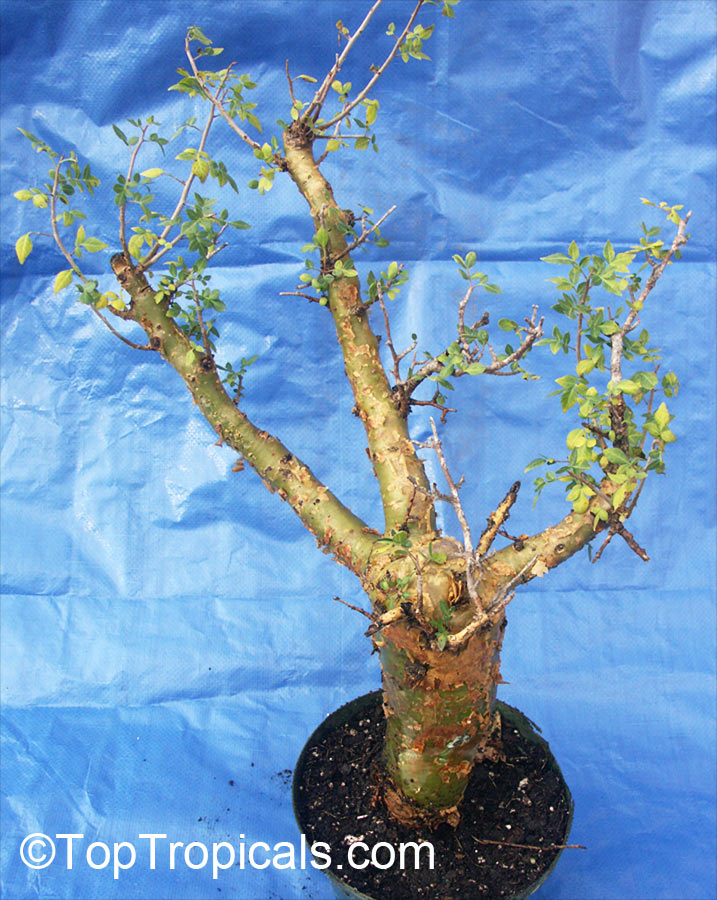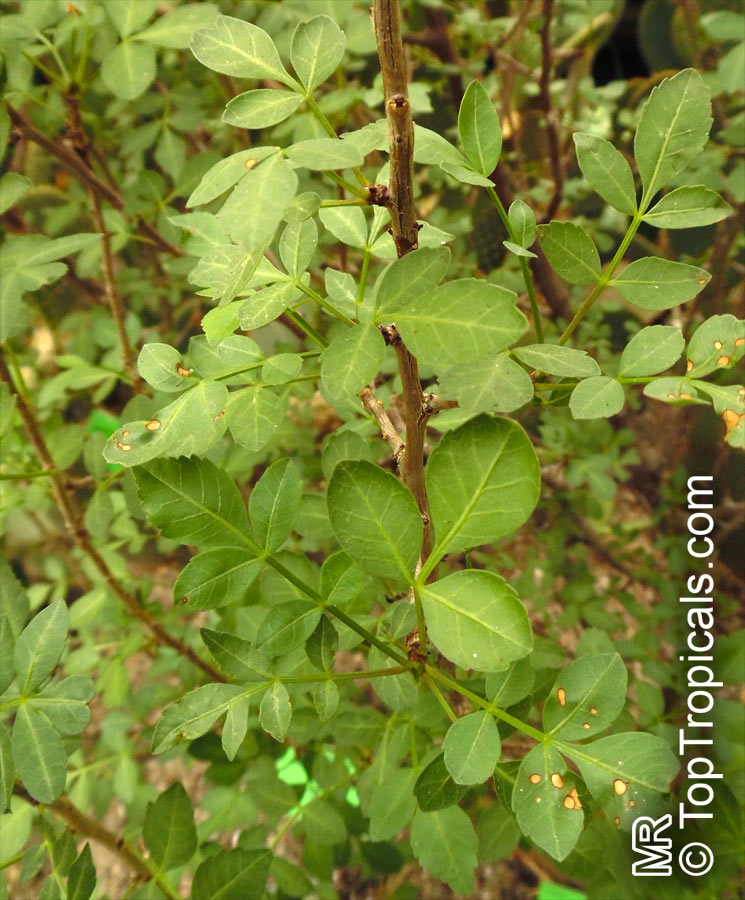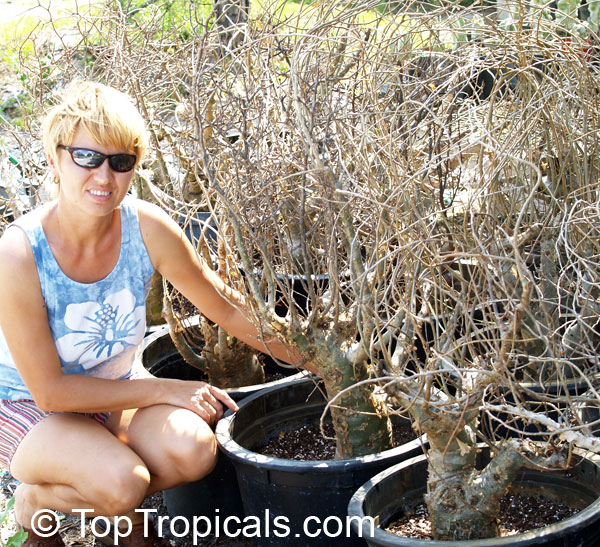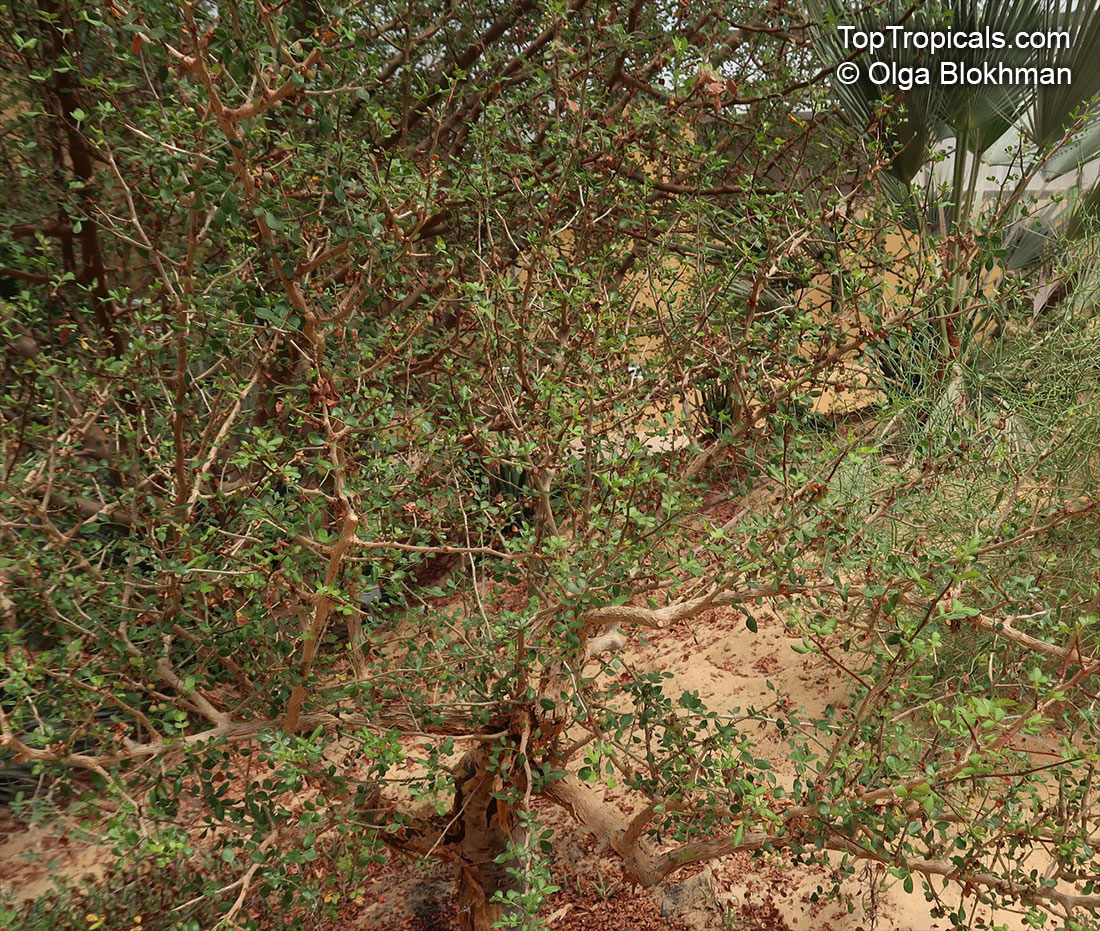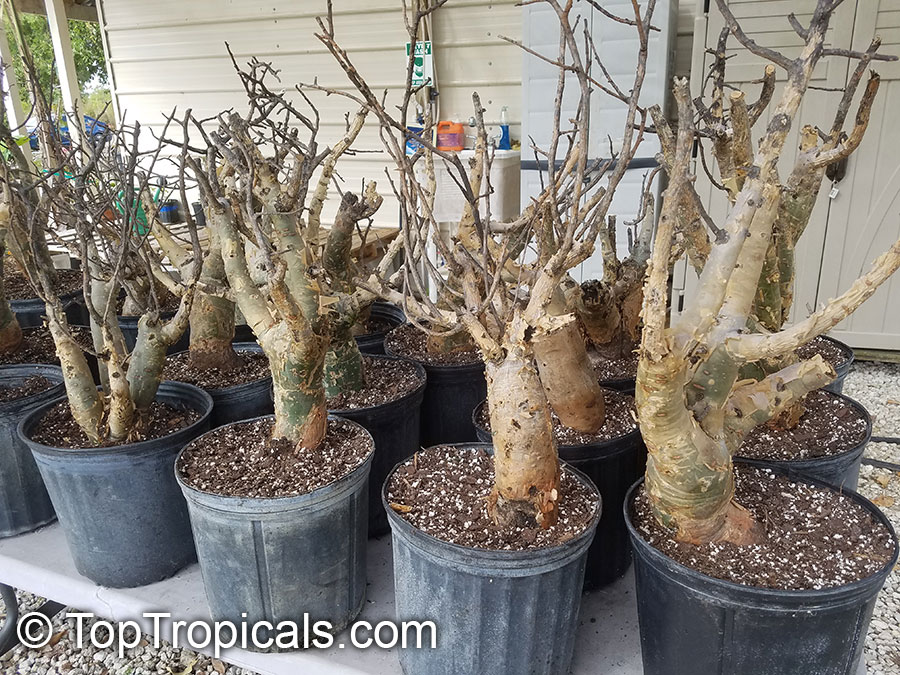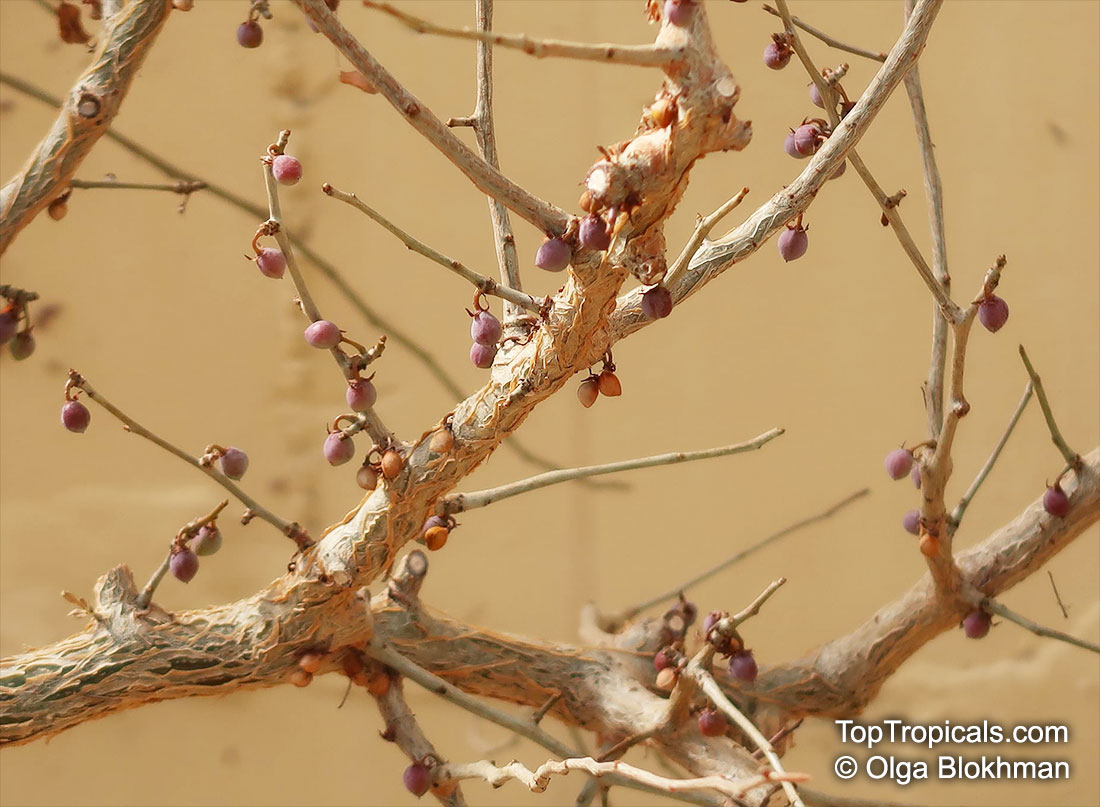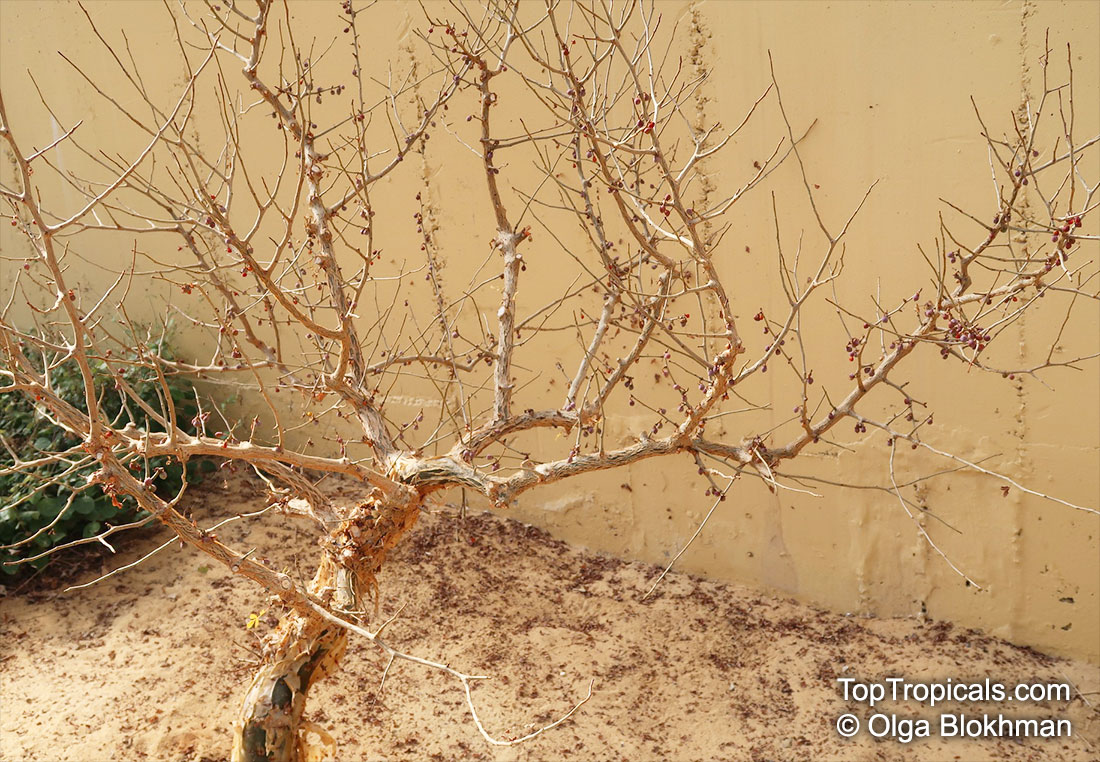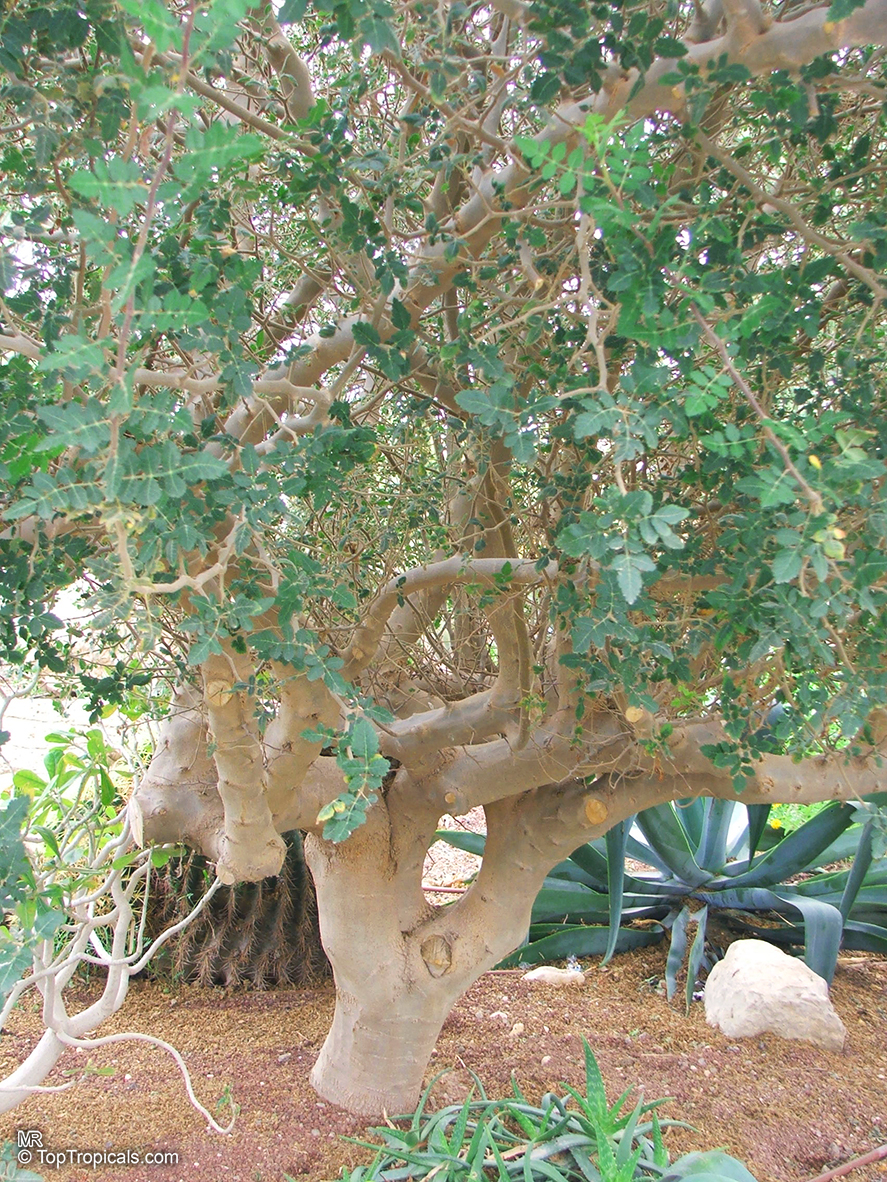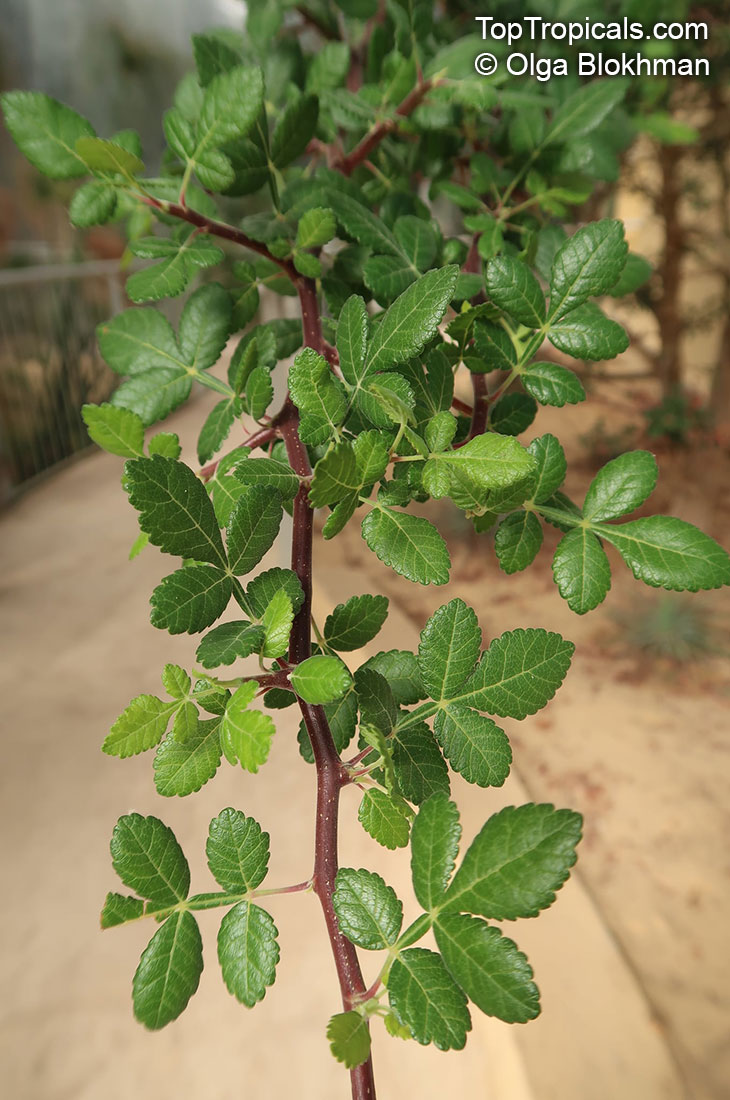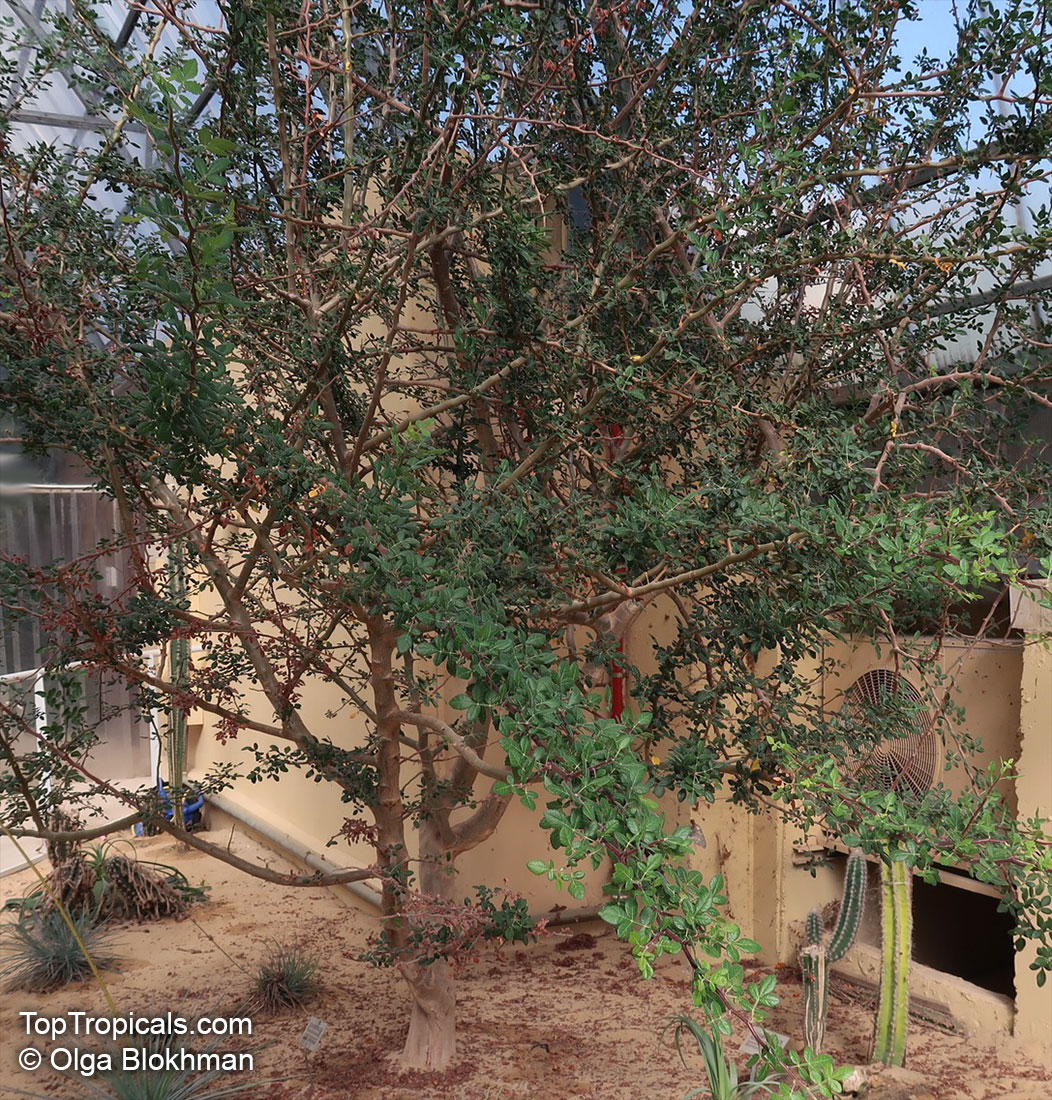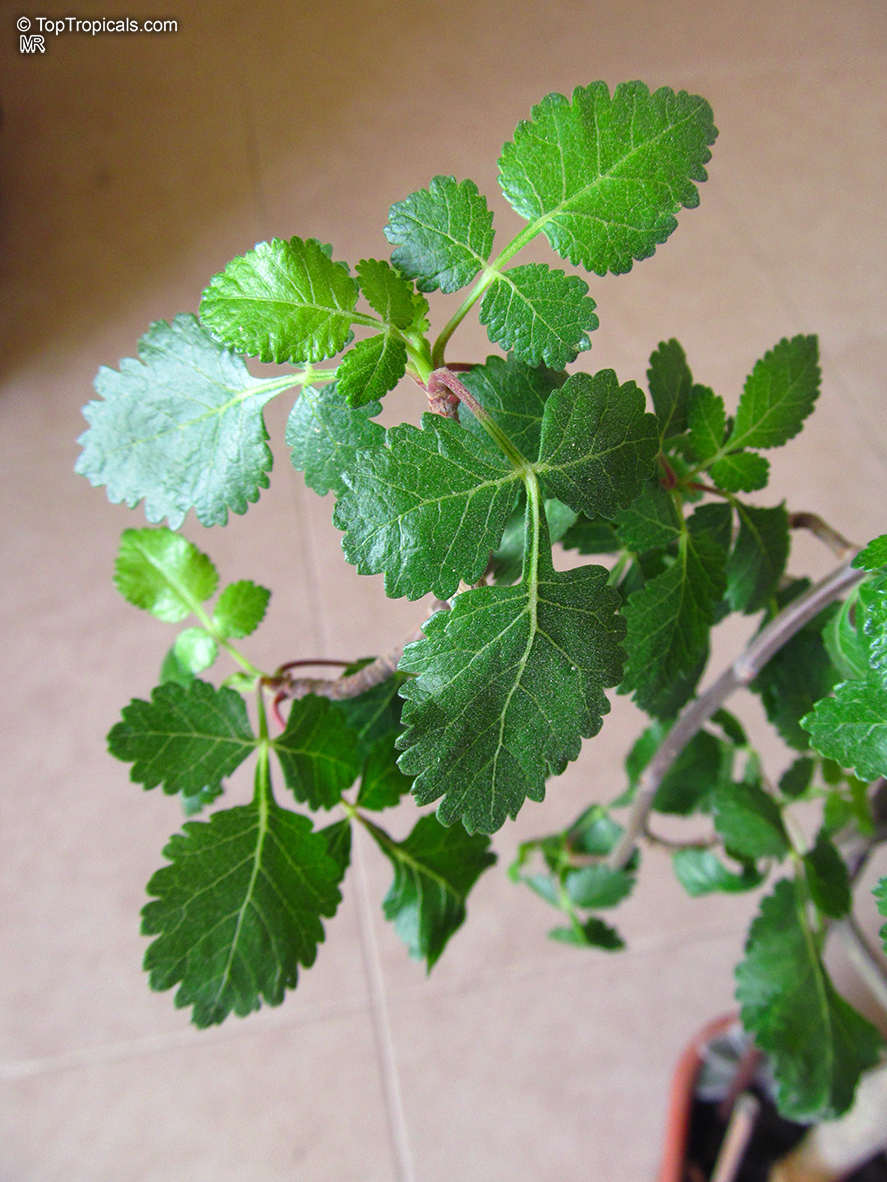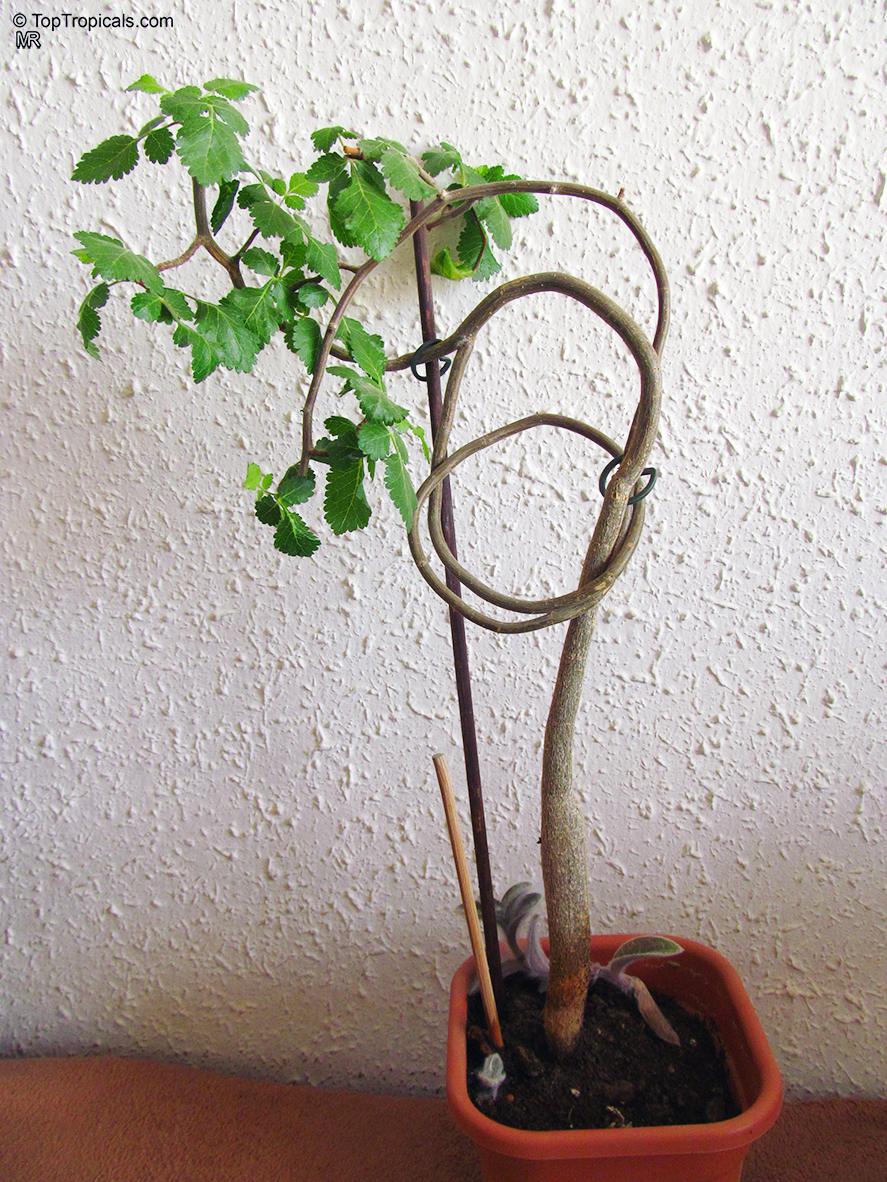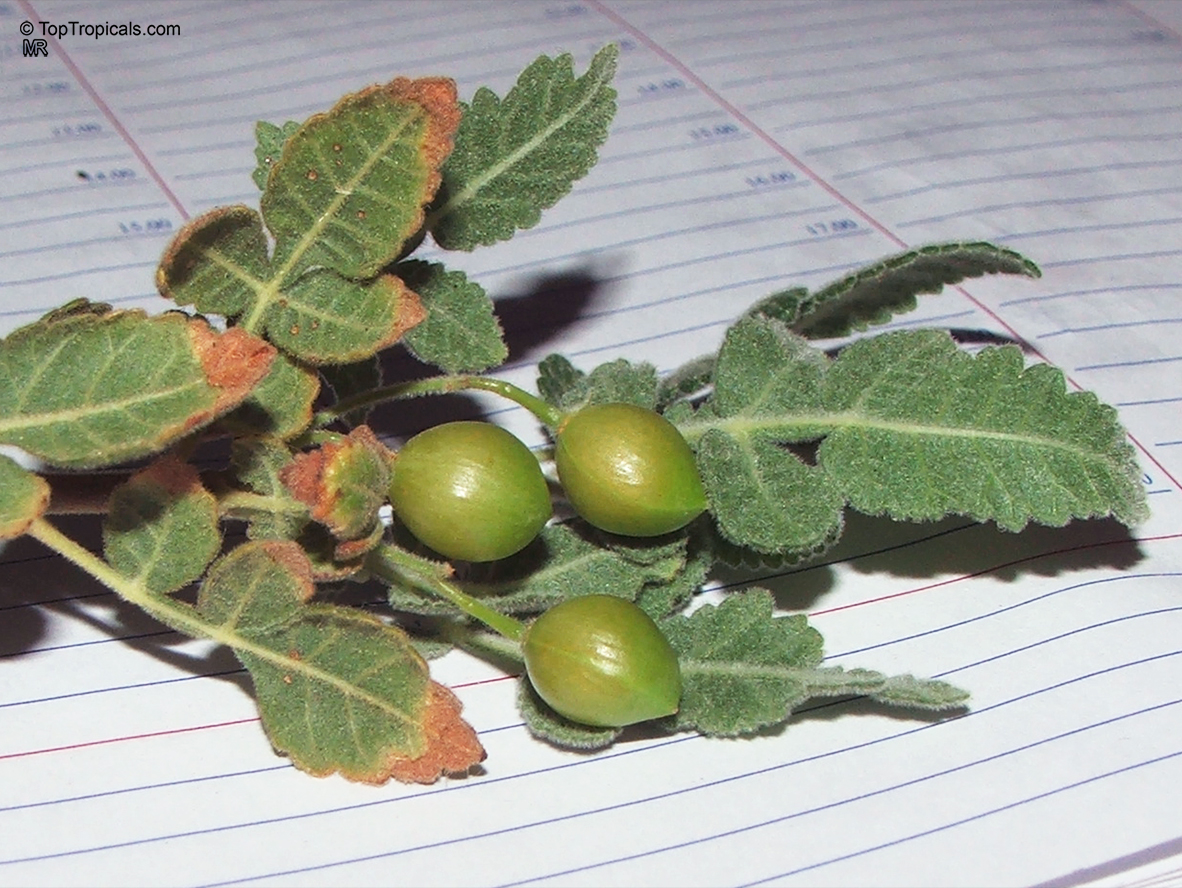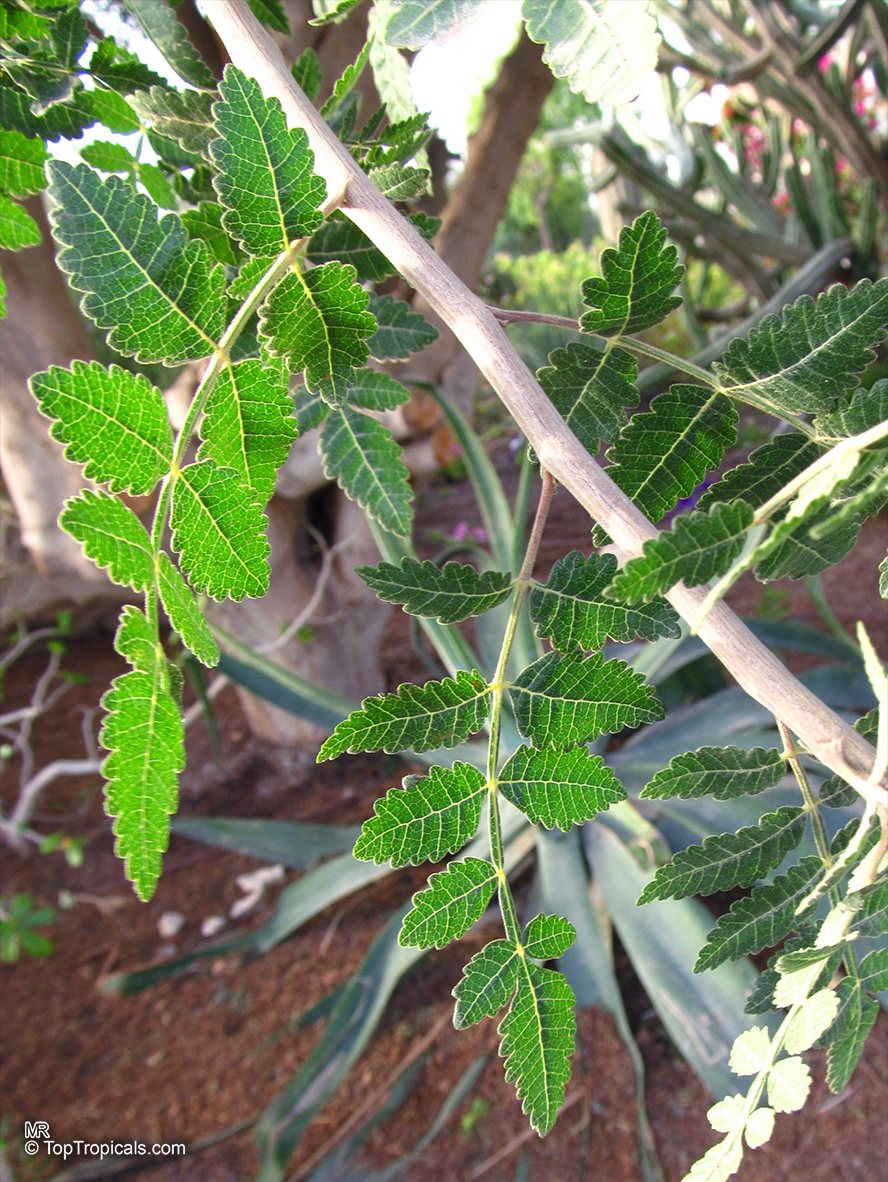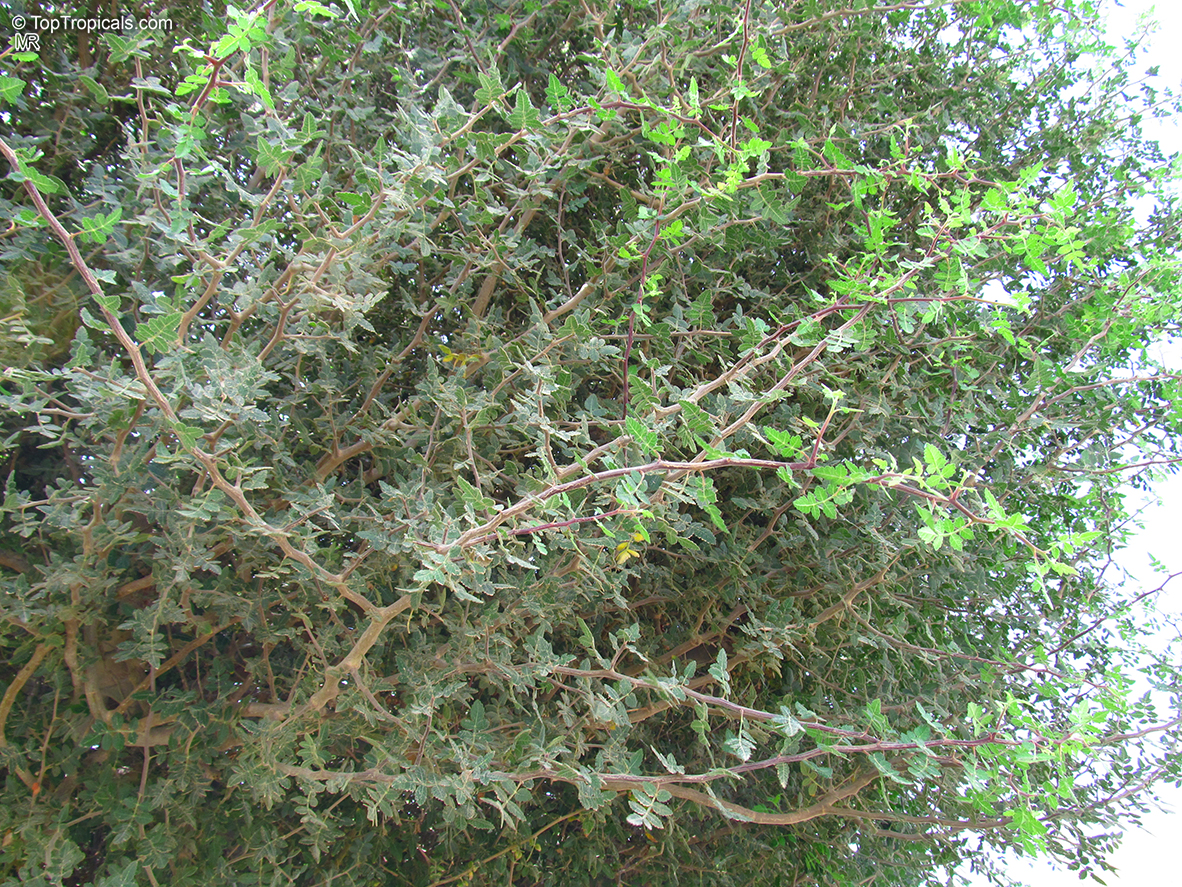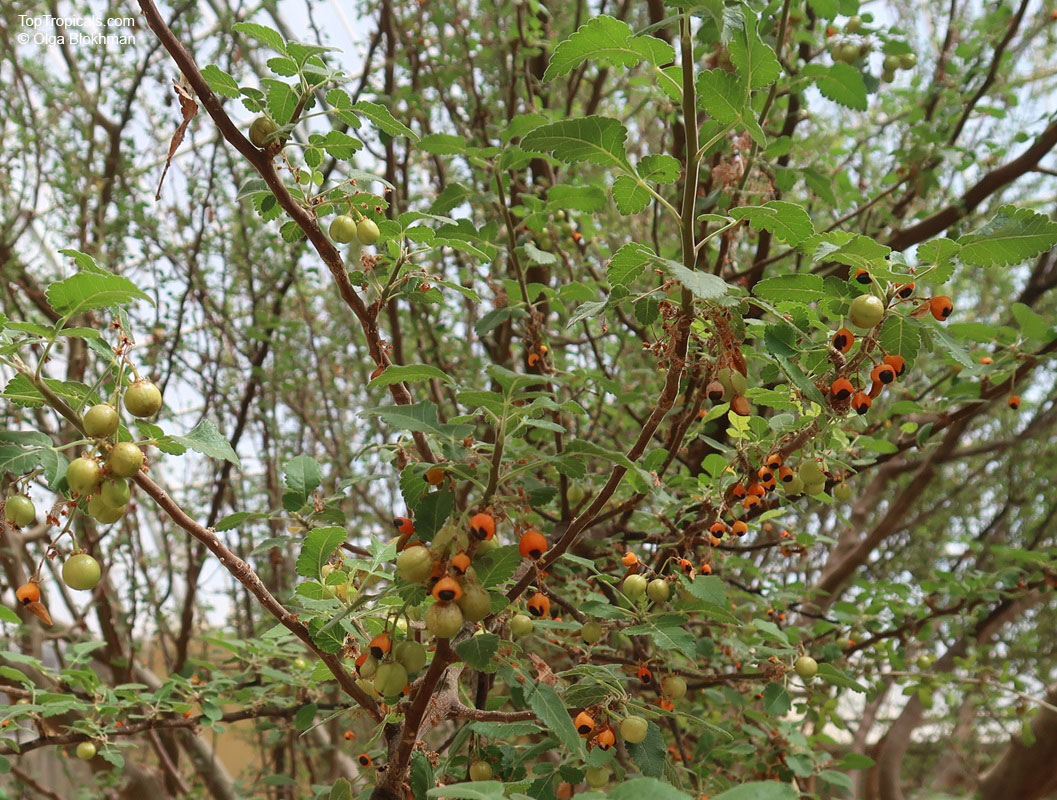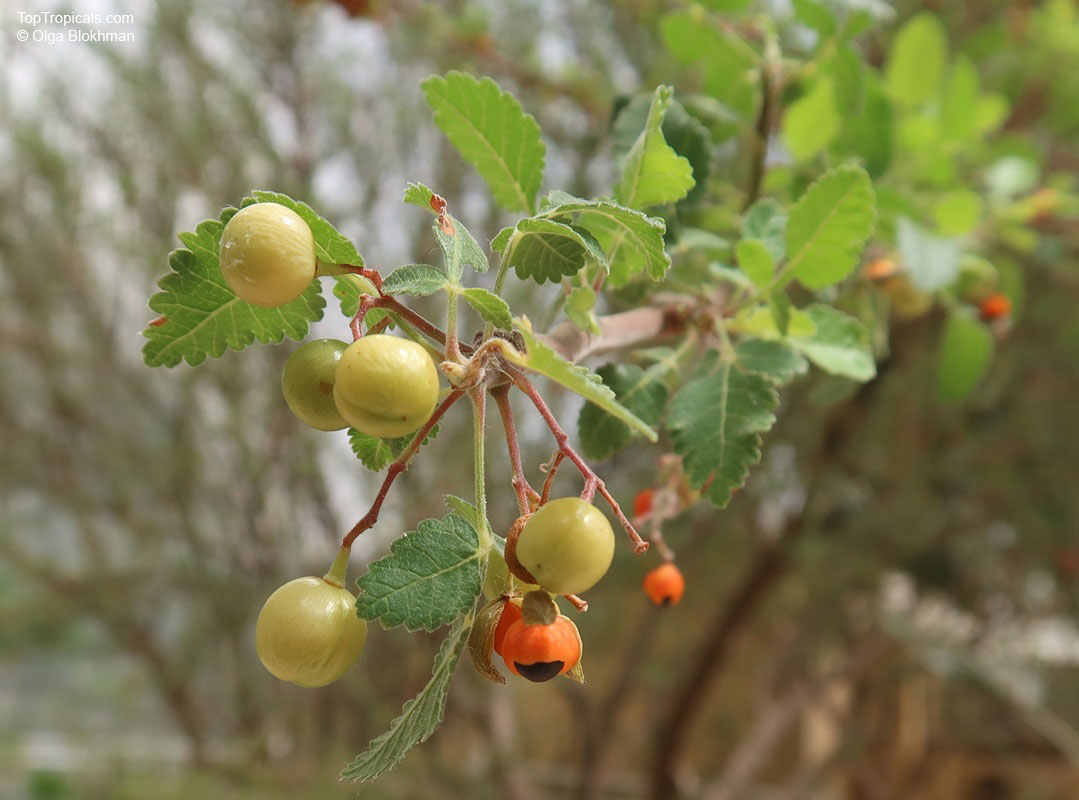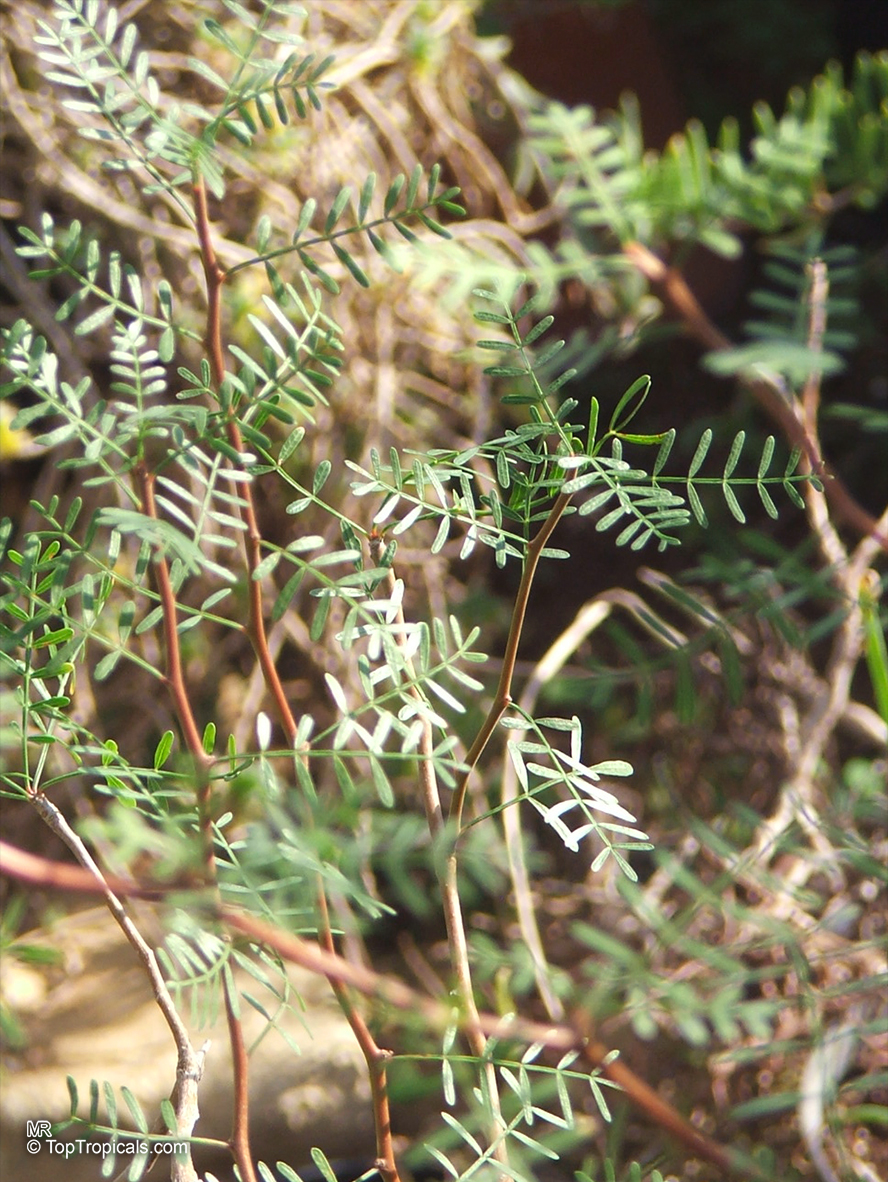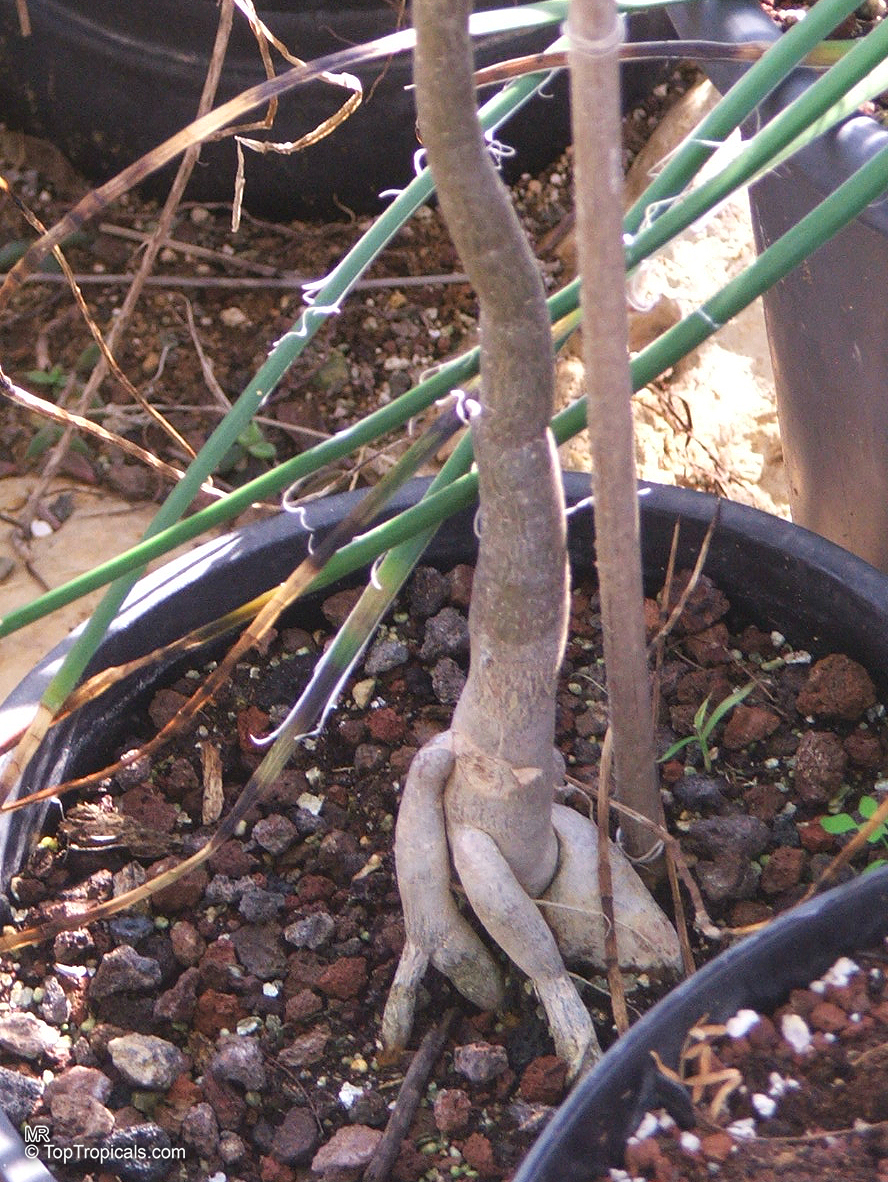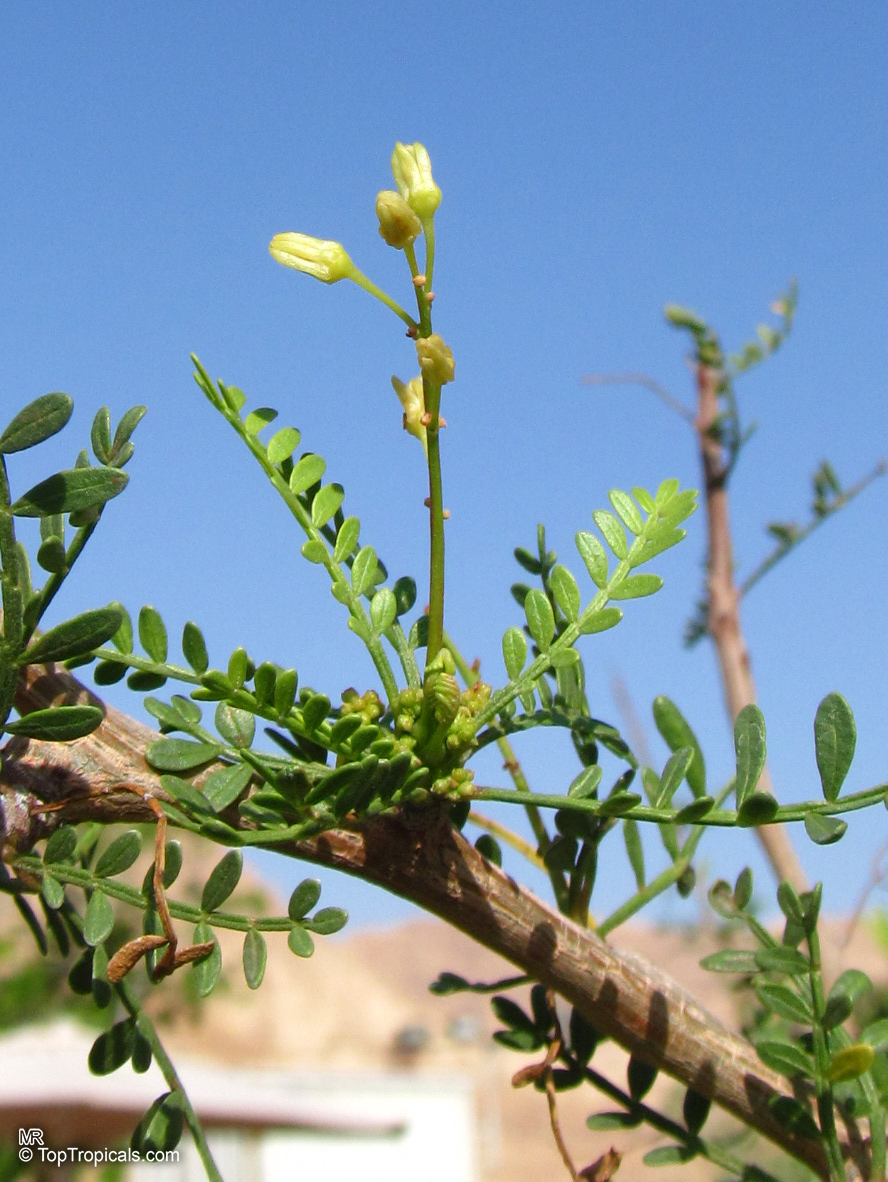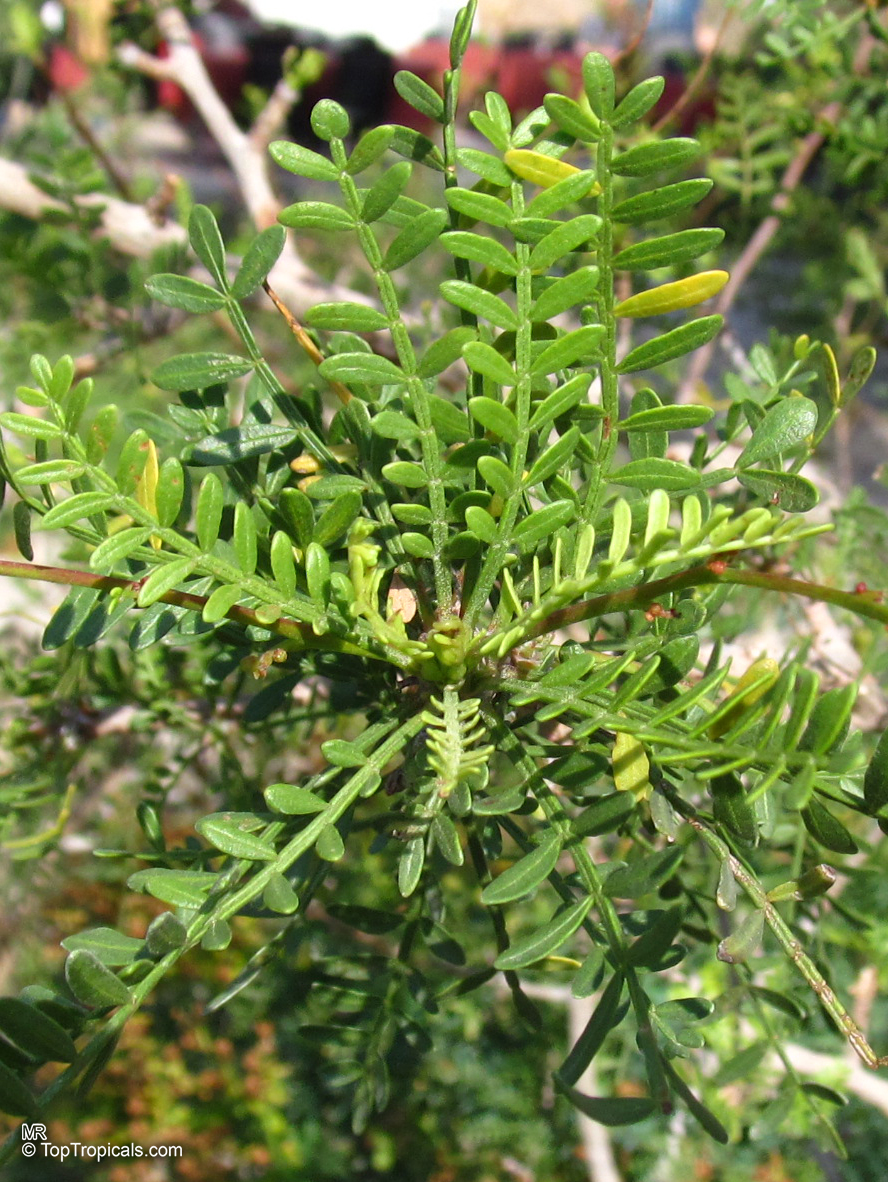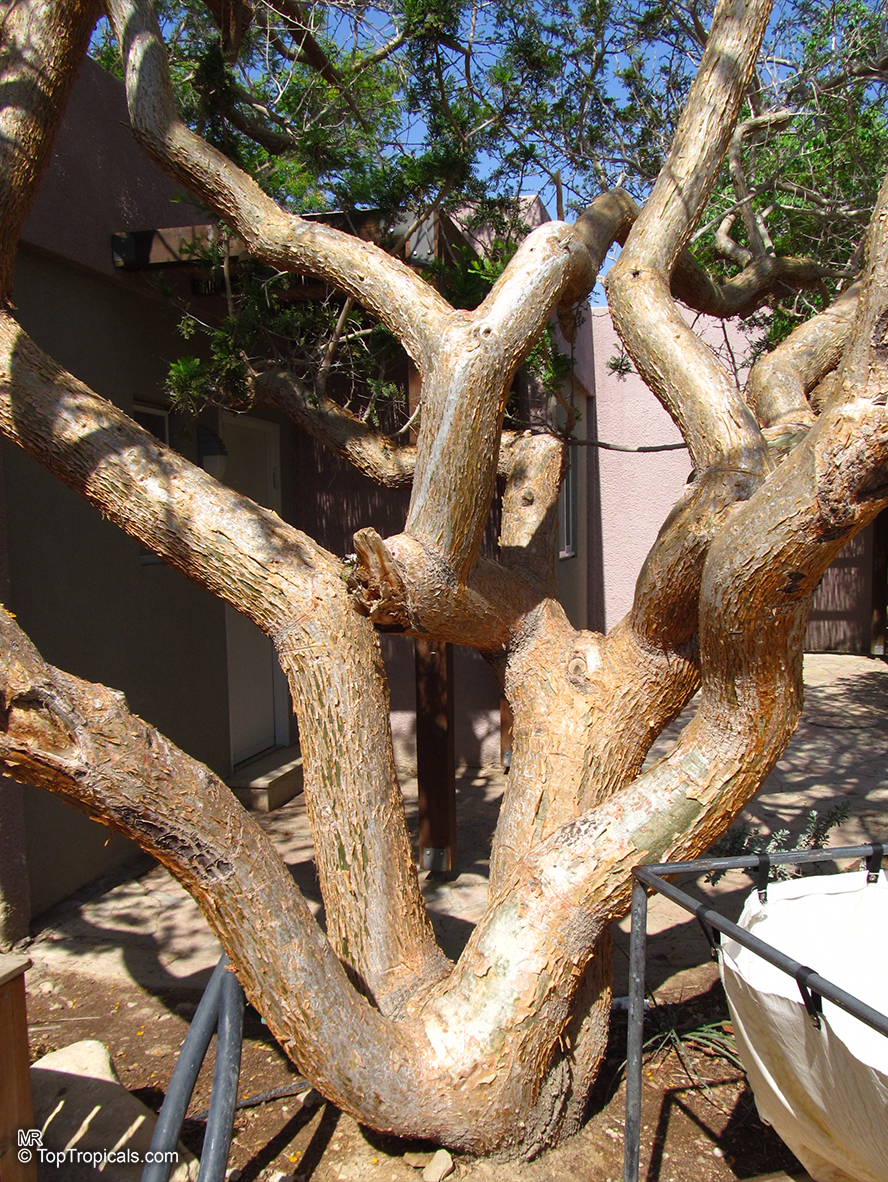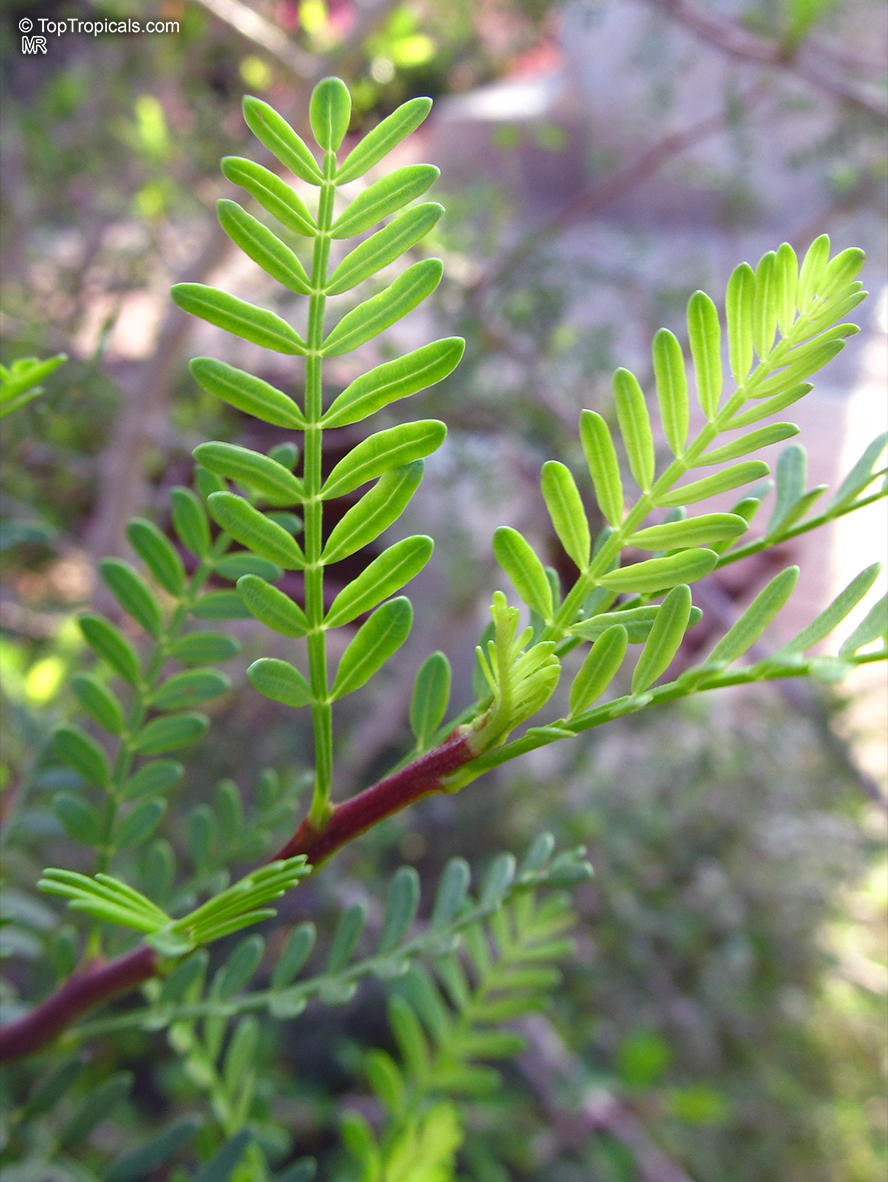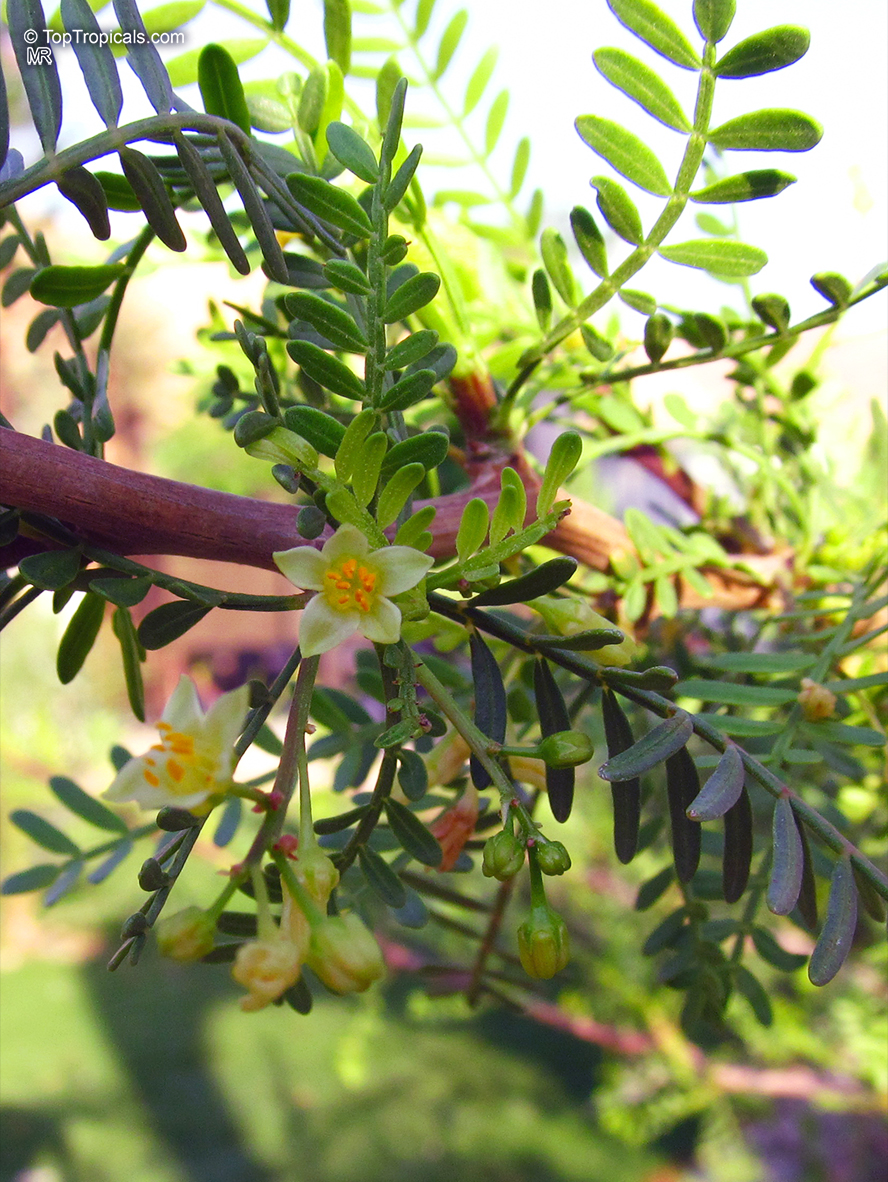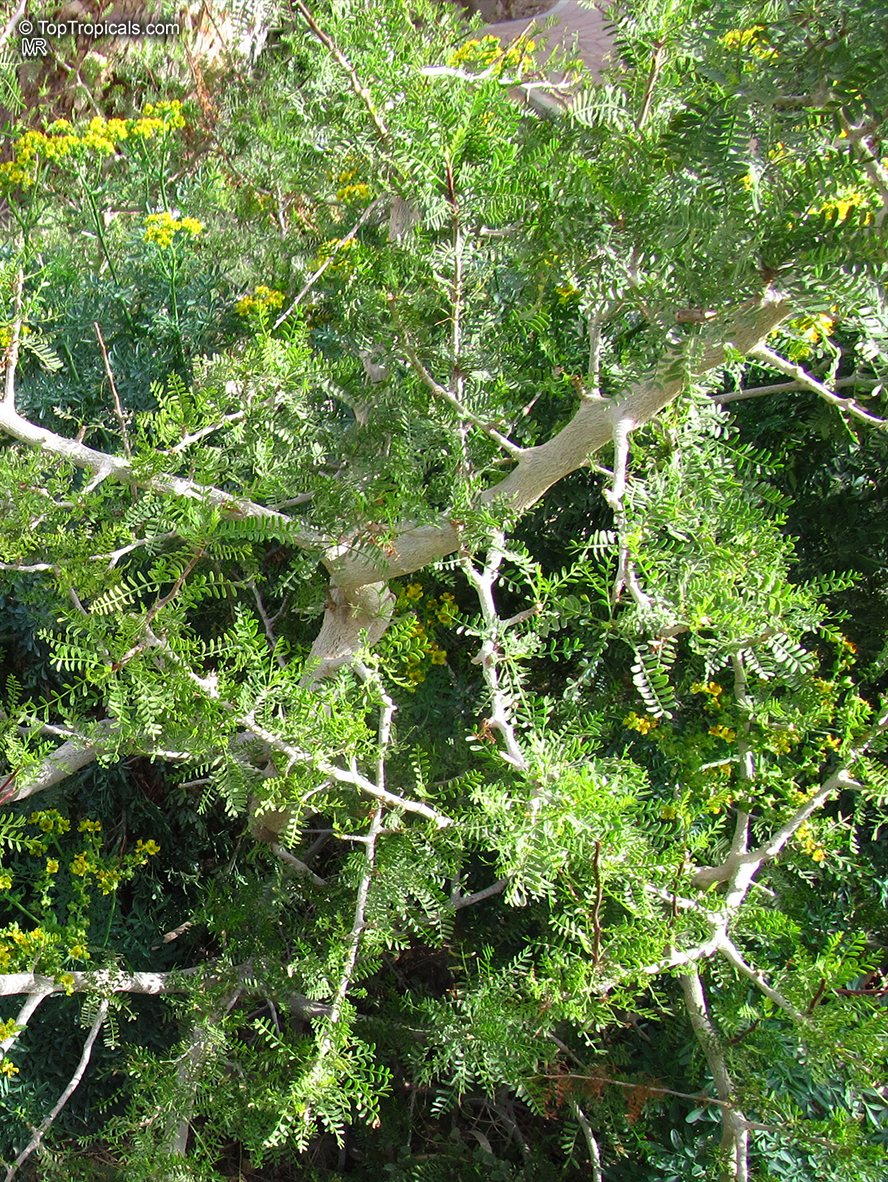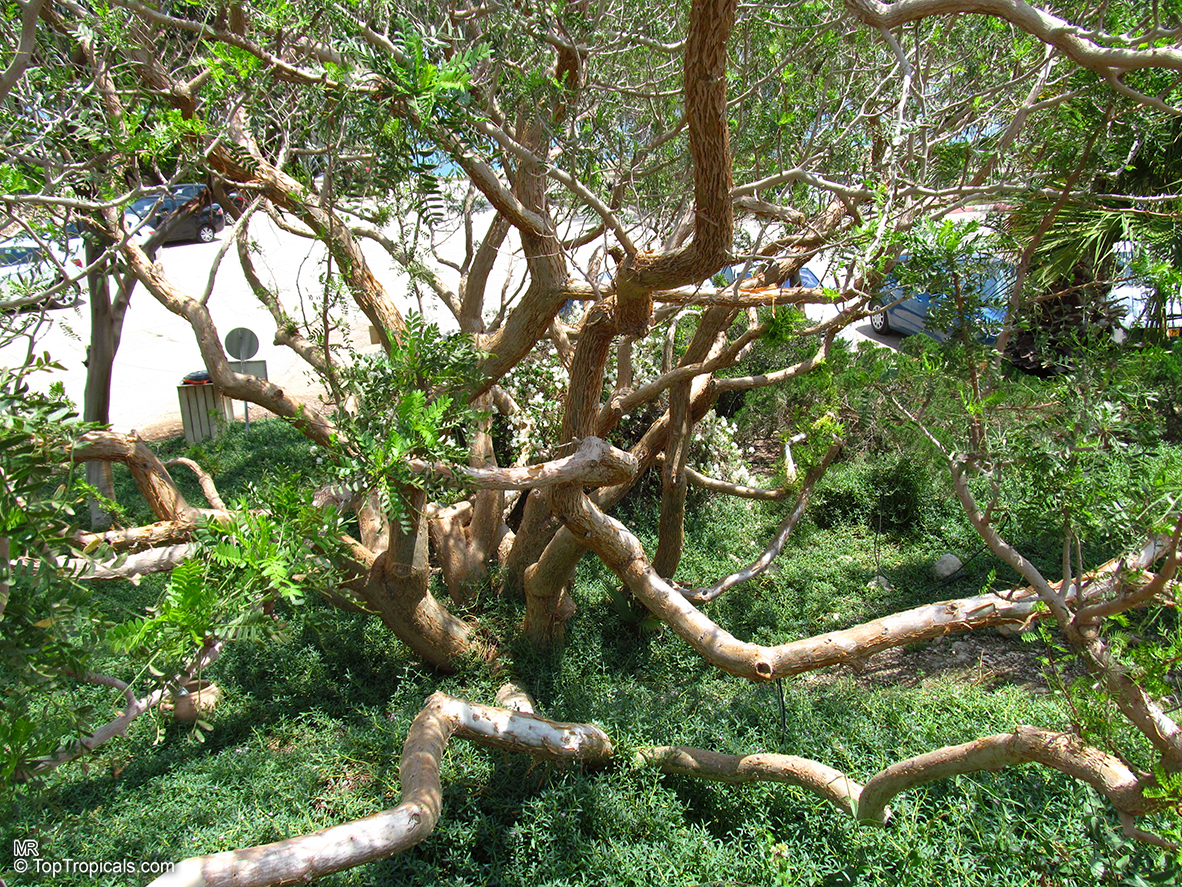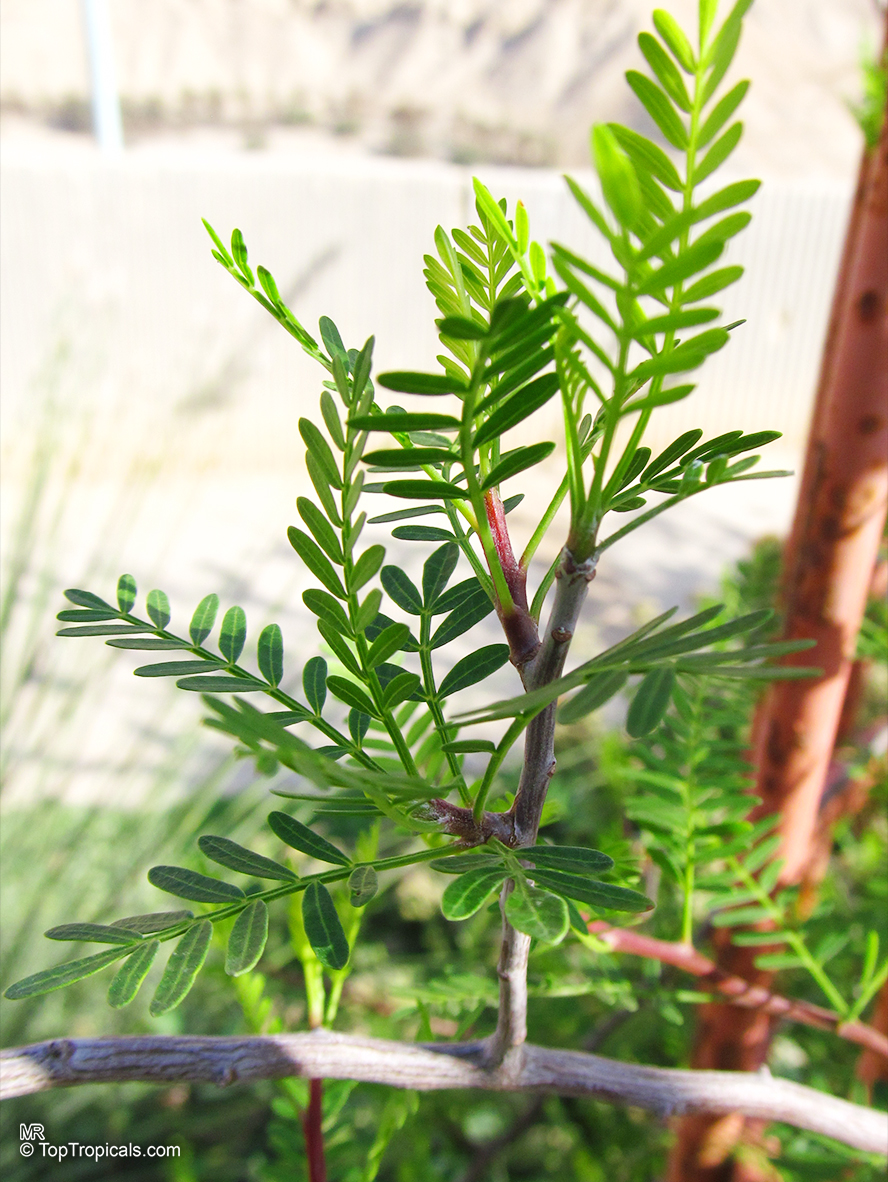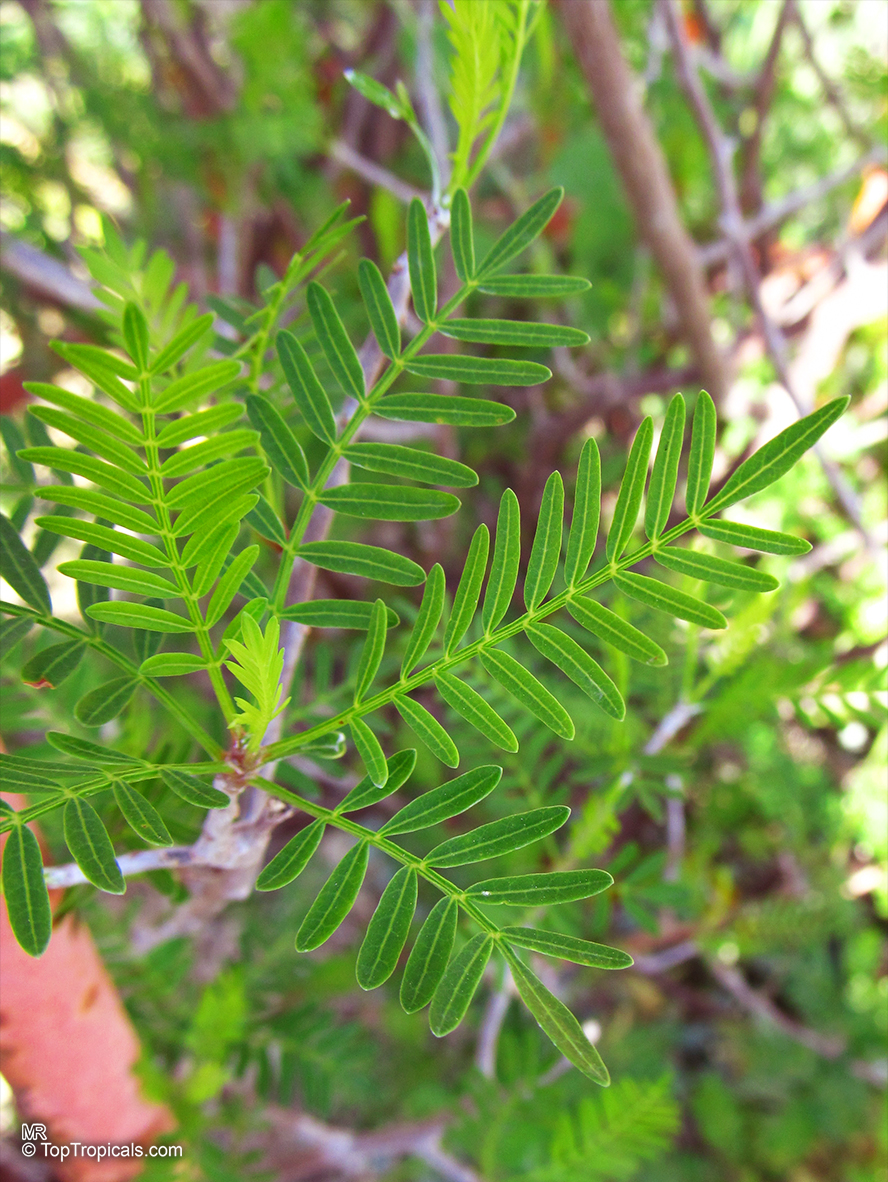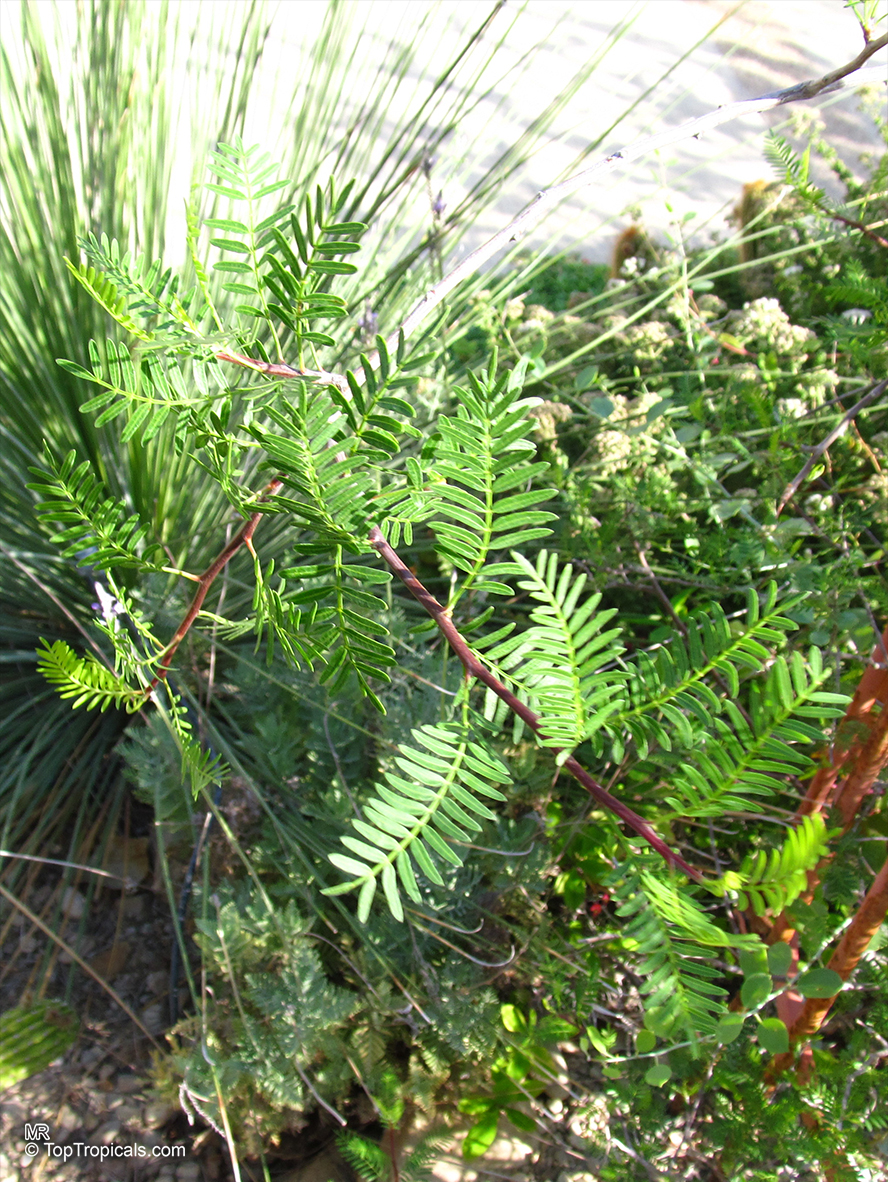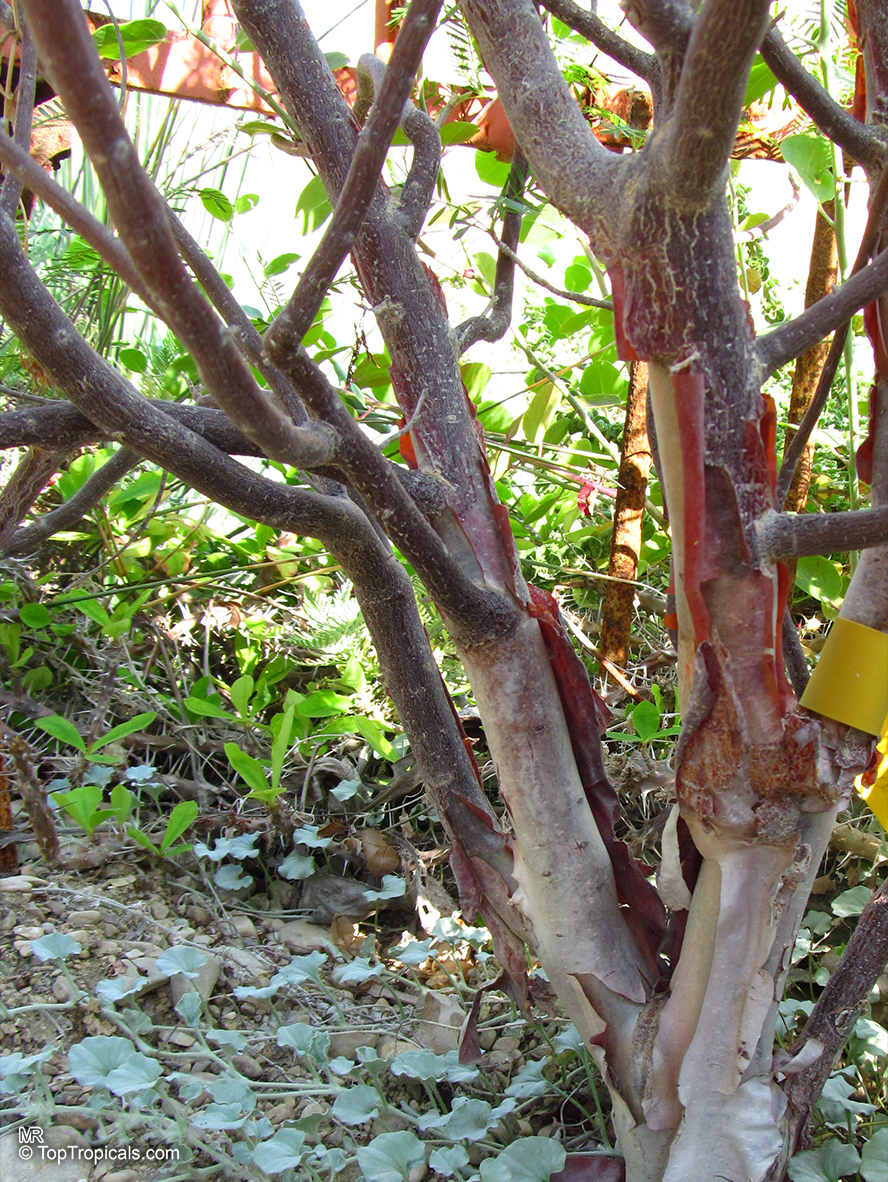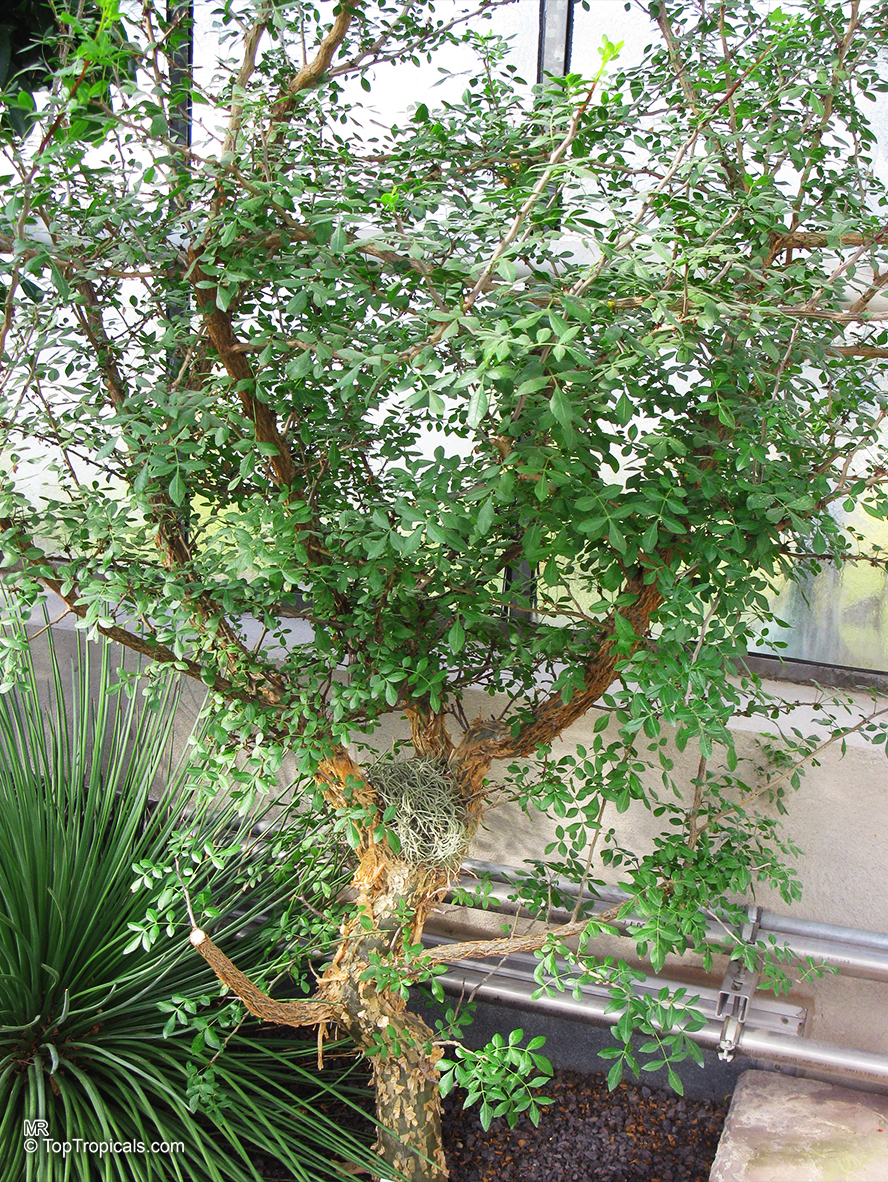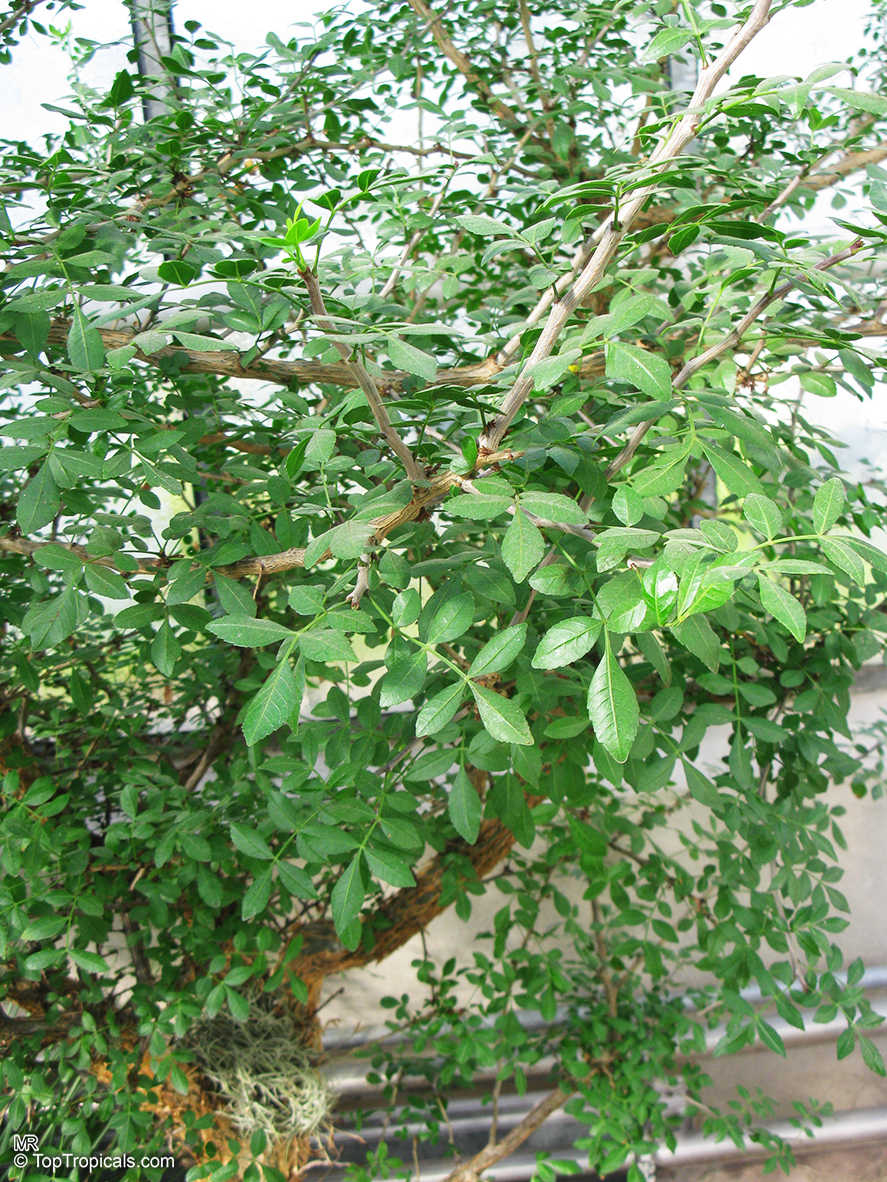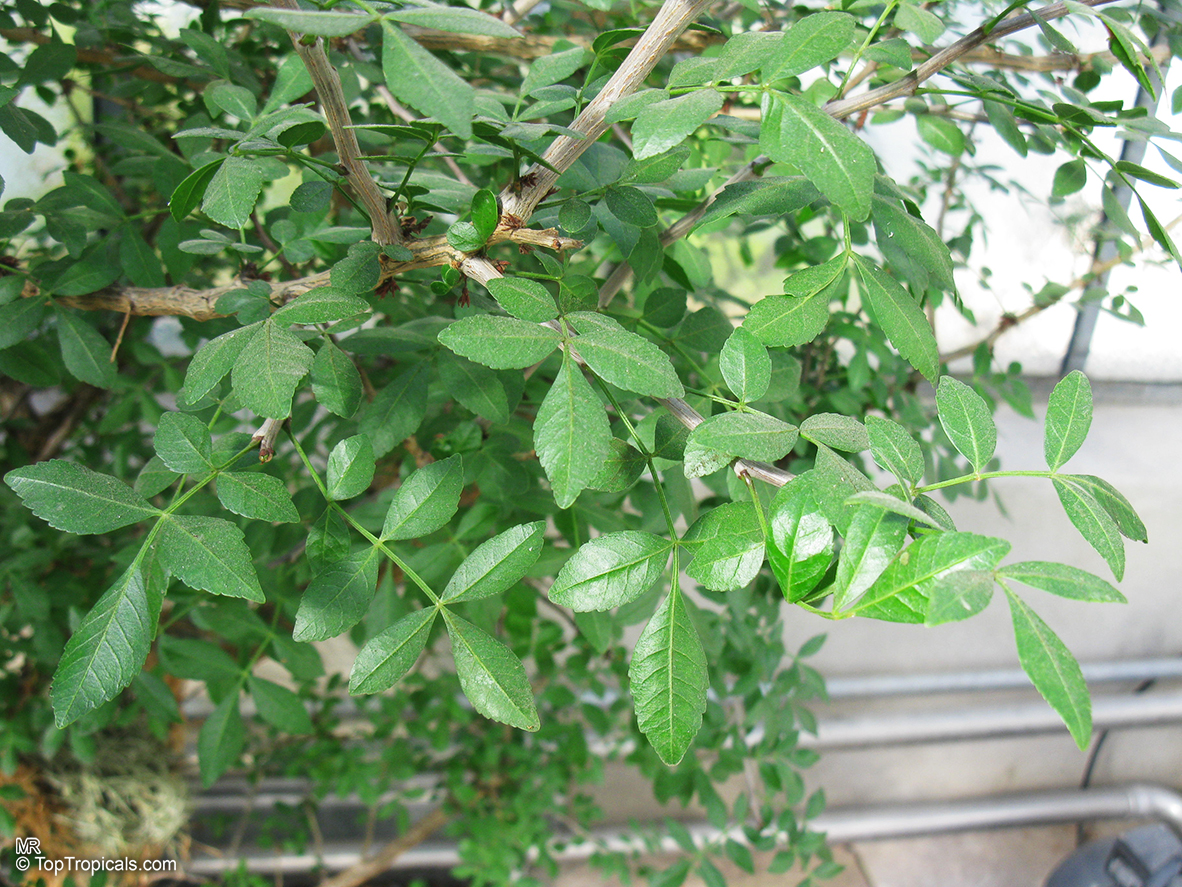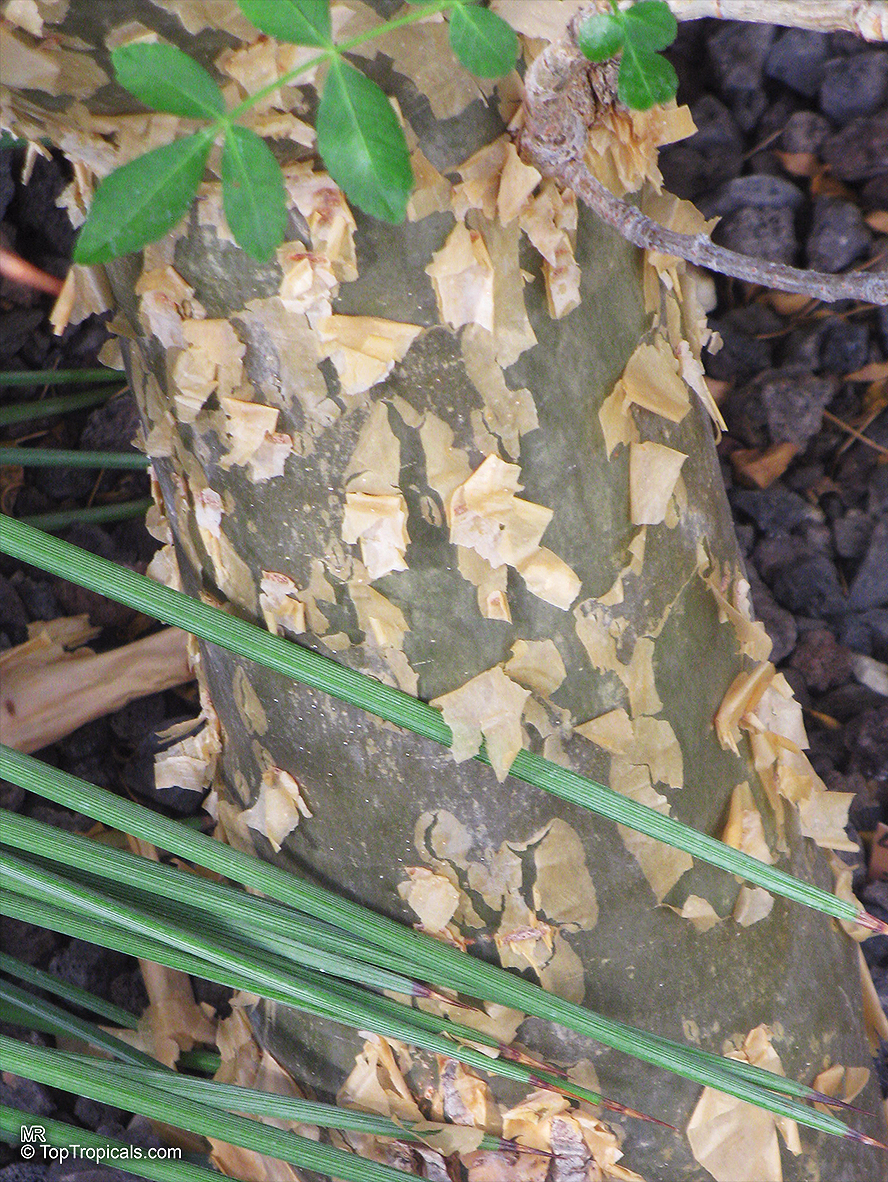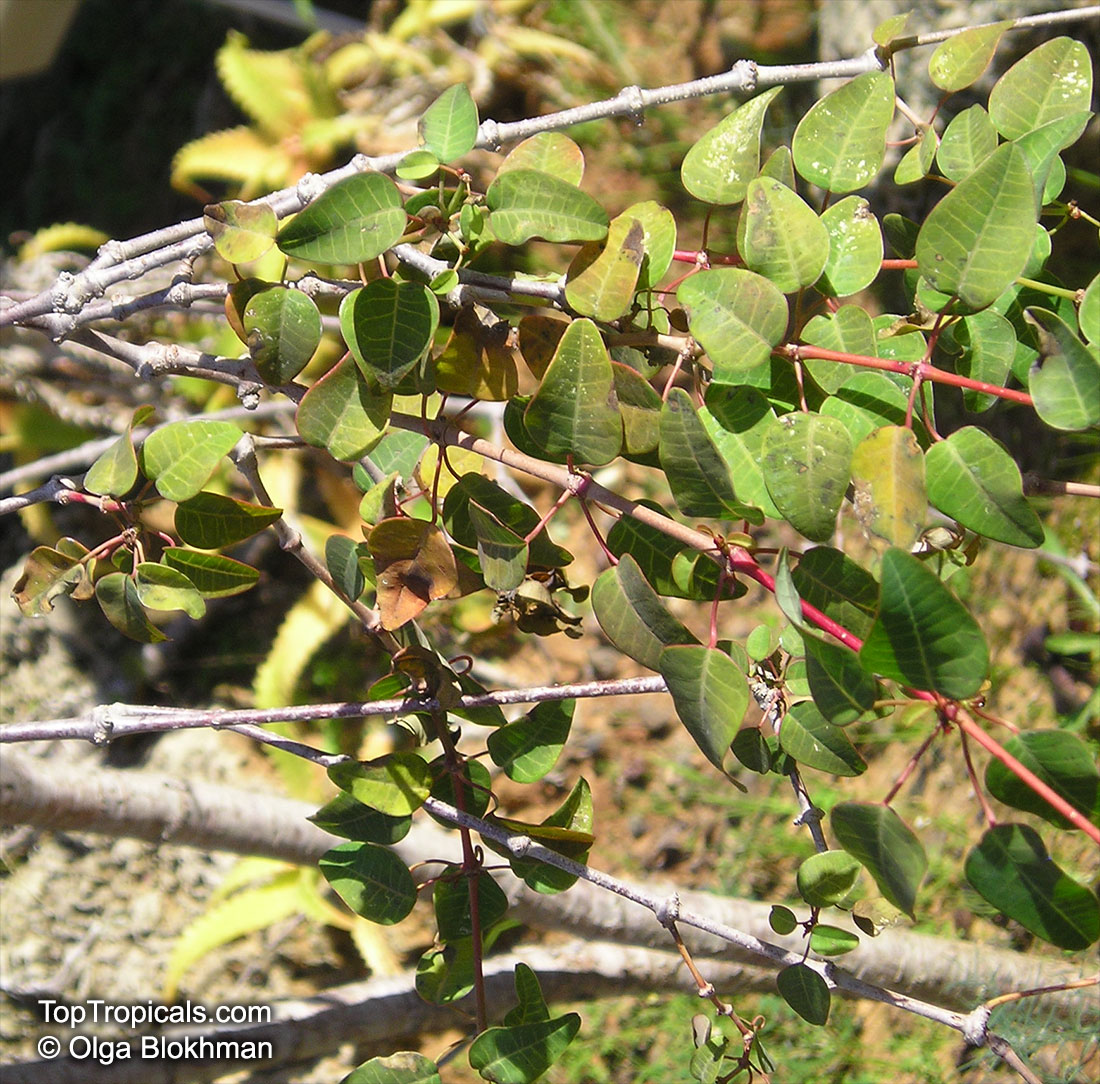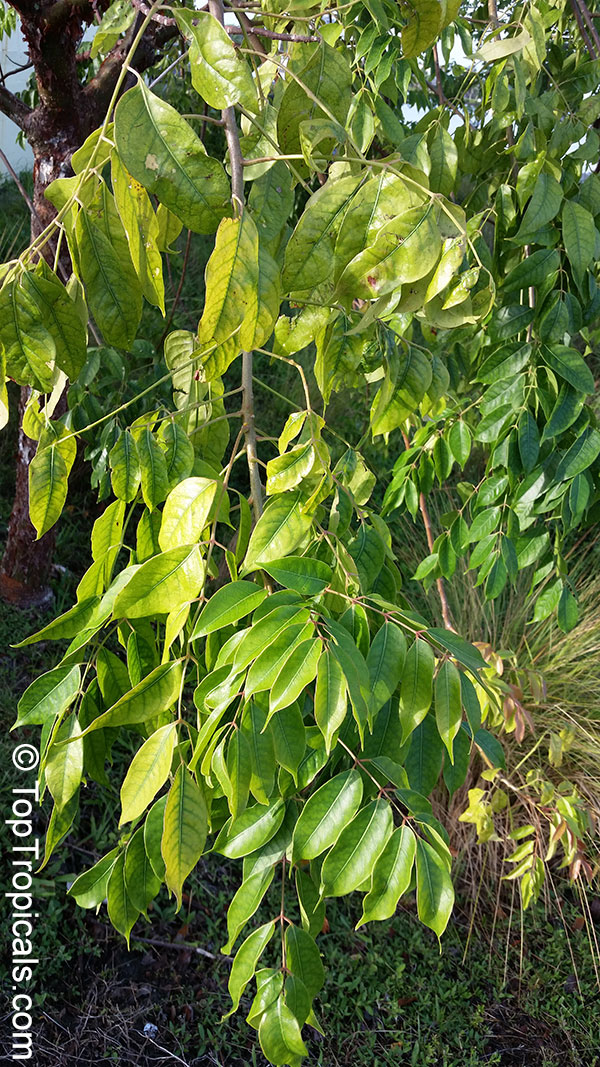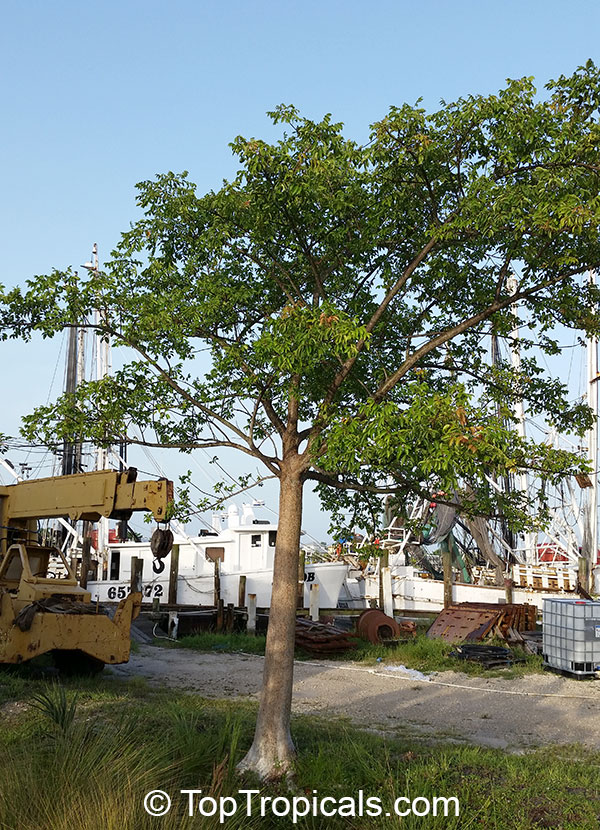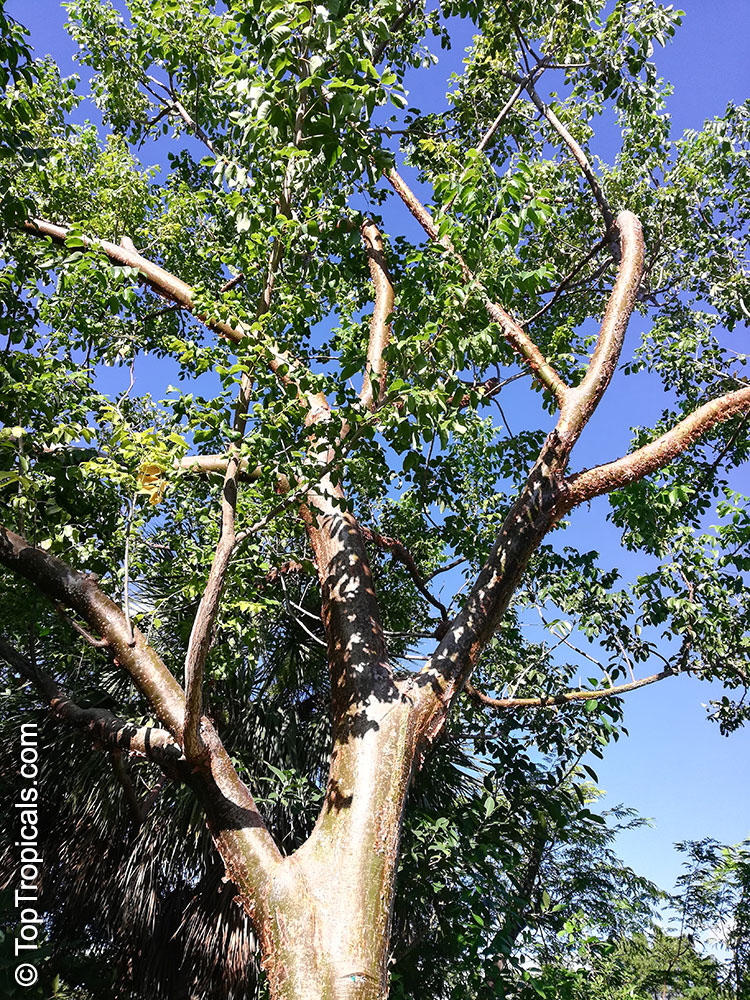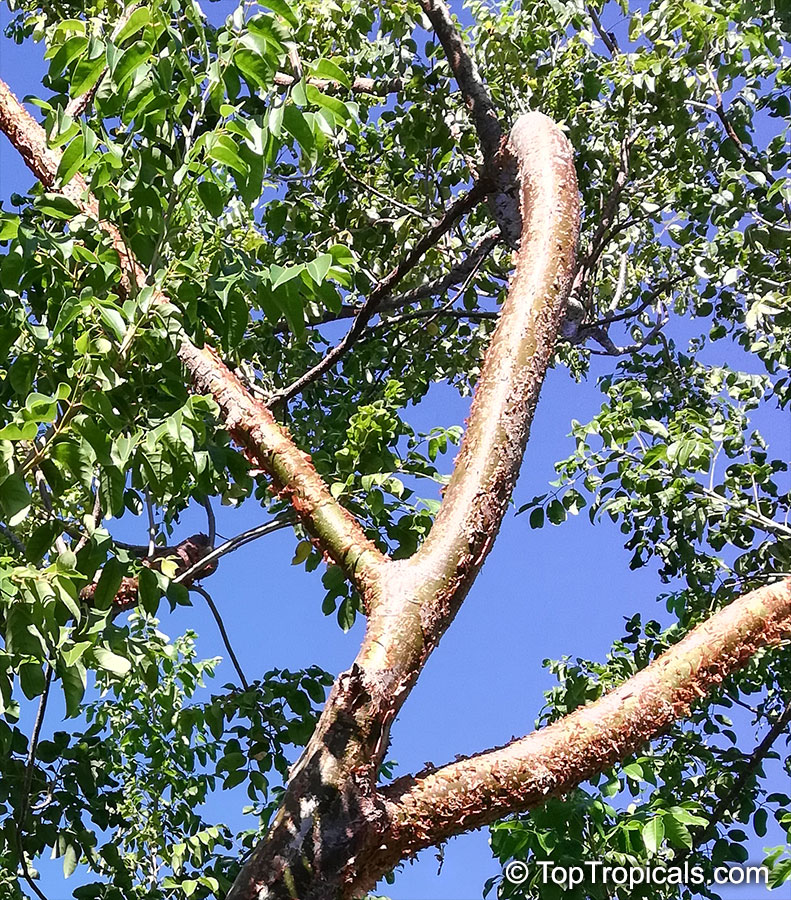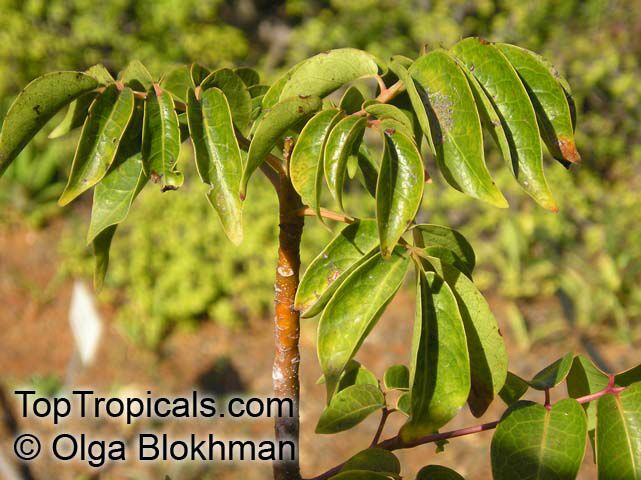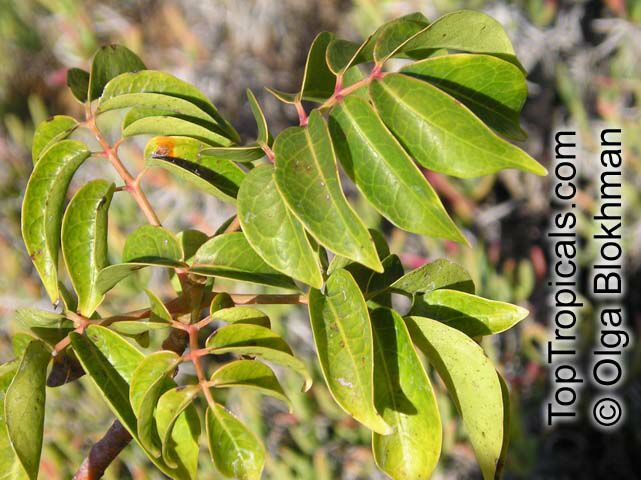Burseraceae - Botanical Family
Top Tropicals Plant Encyclopedia
| Number of plants found: 20 | Next | 
|
Go to page: | 1 | 2 |
Botanical name: Boswellia papyrifera
Common name: Boswellia
Family: Burseraceae
Origin: Northeastern Africa






Botanical names: Boswellia sacra, Boswellia carteri, Boswellia undulato crenata
Common names: Frankincense, Olibanum Tree
Family: Burseraceae
Origin: Northeastern Africa








Boswellia sacra is the primary tree in the genus Boswellia from which frankincense, a resinous dried sap, is harvested.
Boswellia sacra is a tree with papery, peeling bark and leaves clustered at the ends of tangled branches. It has compound leaves and an odd number of leaflets, which grow opposite to one another along its branches. Its tiny flowers, a yellowish white, are gathered in axillary clusters composed of five petals, ten stamens and a cup with five teeth. Boswellia Sacra trees are considered unusual for their ability to grow in environments so unforgiving that they sometimes grow out of solid rock. The initial means of attachment to the rock is unknown but is accomplished by a bulbous disk-like swelling of the trunk.
Botanical name: Boswellia sp.
Common name: Boswellia
Family: Burseraceae
Origin: Tropical Africa








Boswellia is a genus of trees in the order Sapindales, known for their fragrant resin which has many pharmacological uses. Boswellia sacra is the primary tree in the genus Boswellia from which frankincense, a resinous dried sap, is harvested.
Botanical name: Bursera fagaroides
Common names: Elephant Tree, Fragrant Bursera
Family: Burseraceae
Origin: Northwestern Mexico to southern Arizona










A shrub or small tree, widespreading, with a very short, thick, trunk. Develops a swollen trunk, and can be a spectacular specimen. Flower is small, creamy white, borne on long stalks, may be clustered or solitary. Bark is tight and smooth, very attractive, reddish brown and peeling to reveal gray-green. Drought deciduous. Leaves have distinct citrus odor when crushed. Great ready bonsai! The fruit is brown maturing in late fall. The seeds are red, and germinate quite easily. The dried sap of some of the species sold as frankincense.
Botanical name: Bursera hindsiana
Common names: Copal, Torote Prieto
Family: Burseraceae
Origin: Western Mexico







Leaves drought deciduous, serrate, to 2 inches, occasionally trifoliate, aromatic when crushed. Great plant for bonsai.
Botanical name: Bursera microphylla
Common names: Elephant Tree, Torote Colorado, Copal
Family: Burseraceae
Origin: Southern California, Mexico









It can be used as a bonsai specimen and can be grown in USDA Zone 9-11. It makes an attractive, small tree that is 10-20 ft tall.
The Elephant Tree is a beautiful, deciduous plant that is native to Southern California and Mexico. Its distinct feature is its swollen, succulent caudex and a tall, twisting trunk that gives it the appearance of a miniature Elephant. Its pinnate leaves are fragrant and have a strong scent of camphor.
The Elephant Tree can thrive in full sun and semi-shade. It prefers moderate water. Despite its capacity to withstand droughts, it must not be kept constantly dry or moist for too long. The plant is especially useful for xeriscaping or for adding flavor to a garden. It is sure to be a standout in all types of landscapes.
It can be used as a bonsai specimen, as its propensity for drought resistance enables it to withstand harsh growing conditions. For bonsai enthusiasts, the Elephant Tree offers a truly unique addition to the garden.
The Elephant Tree is a popular ethnomedical plant with immense potential in healing and treating symptoms. Its roots and leaves are used as a source of medicinal compounds, such as Gum Burseran, a type of resin extracted from its bark.
Growing the Elephant Tree in a pot in cold regions is possible. However, the plant must be kept warm during the colder months. It should be placed in a sunny location to provide the light and heat it needs. The soil should be kept moist, and the plant should be fertilized every two months. To guarantee its survival, it is recommended to use a thick layer of mulch to protect the roots and to ensure they don't get too dry during winter. Moreover, potted specimens must be ensured that they don't experience great fluctuations in temperature.
Botanical name: Bursera morelensis
Common name: Red Cuajiote
Family: Burseraceae
Origin: Mexico






Bursera morelensis, native to Mexico and Guatemala, is an ethnomedical plant with healing properties. It is prized for its extraordinary color and can be used for bonsai. The pinnate leaves are aromatic with a strong scent of camphor.
This small evergreen tree grows to a maximum height of 10-20 ft. It needs full sun and moderate water. It is a deciduous plant and must be protected during winter in cold regions. It is hardy in USDA Zone 9-11.
In cold areas, Bursera morelensis can be grown in a container and protected by keeping it indoors during the coldest months. The plant should be watered regularly, but the amount of water should be limited and the soil should be allowed to dry between waterings. It should be fed with a balanced liquid fertilizer once or twice a month during the growing season. During winter, water should be limited even further.
In its natural environment, Bursera morelensis is able to self-propagate. When it grows in a pot, however, propagation is more difficult. If one wants to propagate it, it is best to propagate from cuttings from laterite or coral sand and cuttings will usually root in two to four weeks. Once the cuttings have rooted, they can be transplanted into the ground or into larger containers.
The Bursera morelensis is incredibly easy to grow and care for, and is a great choice for anyone looking to add a splash of color to their outdoor space. In addition it is a highly valued ethnomedical plant, with many healing properties that have been prized since ancient times.
Botanical name: Bursera odorata
Common names: Torote Blanco, Elephant Tree
Family: Burseraceae
Origin: Mexico






Botanical name: Bursera schlechtendalii
Family: Burseraceae
Origin: Mexico







Bursera schlechtendalii is a tuberous shrub or tree. This woody succulent has smooth bark that flacks off in layers when growing. It can grow to about five feet. The branches are silvery, dark-grey and have small, unifoliate leaves that group at the apex
Botanical name: Bursera simaruba
Common names: Gumbo-Limbo, West Indian Birch, Tourist Tree
Family: Burseraceae
Origin: Central America, West Indies






Very fast growing, tolerant of salt and calcareous soils, the Bursera simaruba, with its attractive shiny red exfoliating bark, makes a beautiful specimen tree in a mild coastal location. Massive trunk with attractive reddish peeling bark, showing a gray underbark.
| Next |  |
Use link to repeat this search:
https://toptropicals.com/cgi-bin/garden_catalog/cat.cgi?search_op=and&keyword_op=and&language=e&family=Burseraceae&number=10
&no_change_lang=1&user=tt&sale=1&first=0
